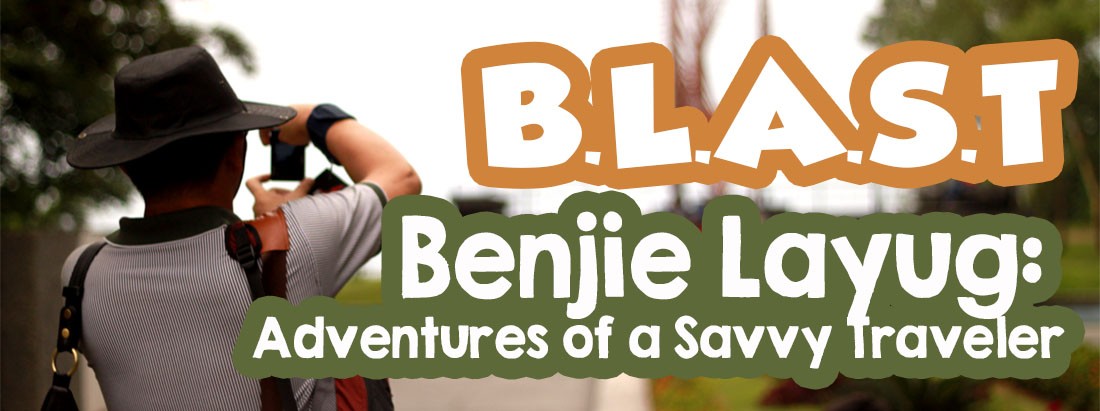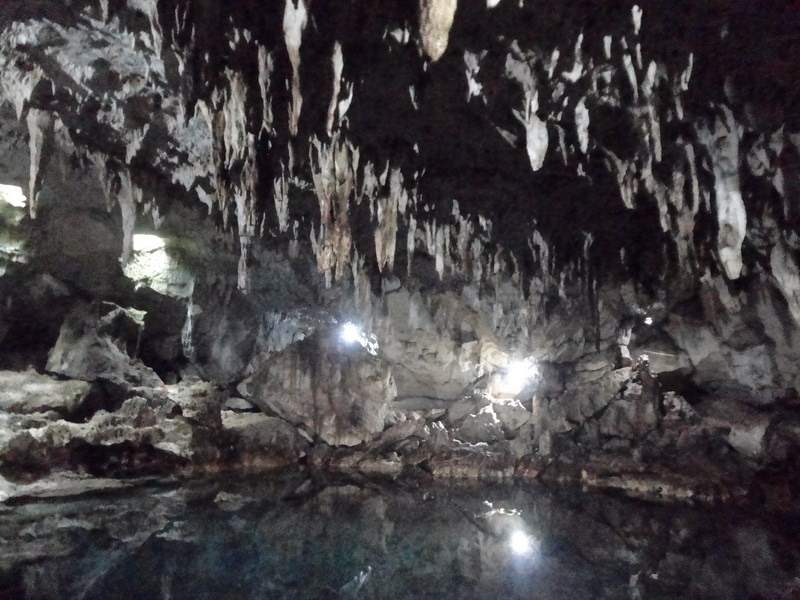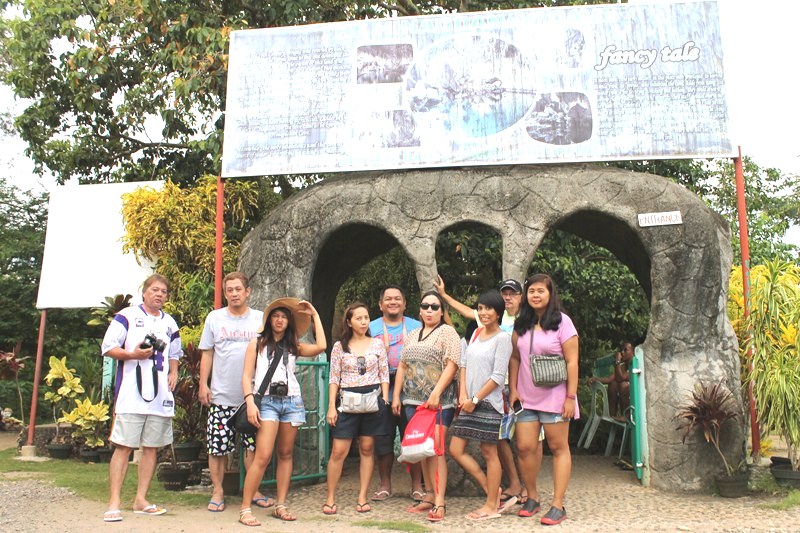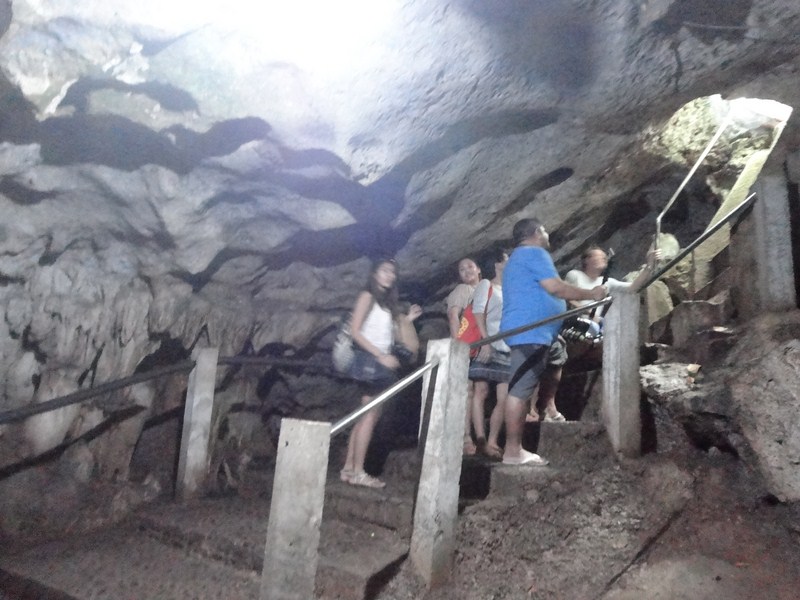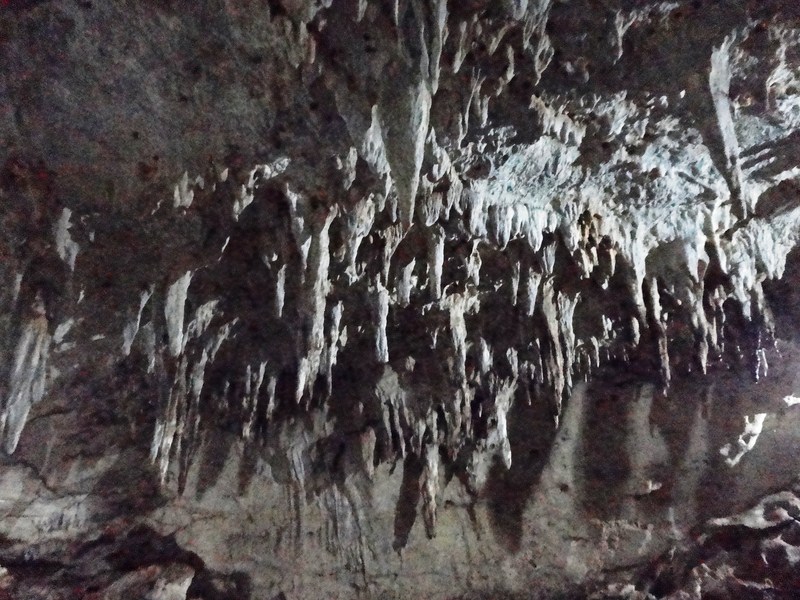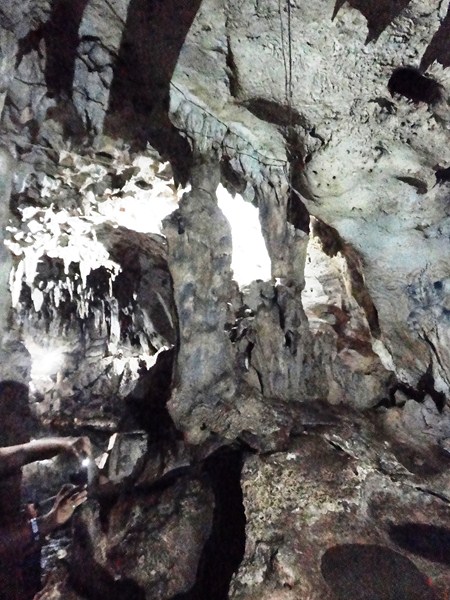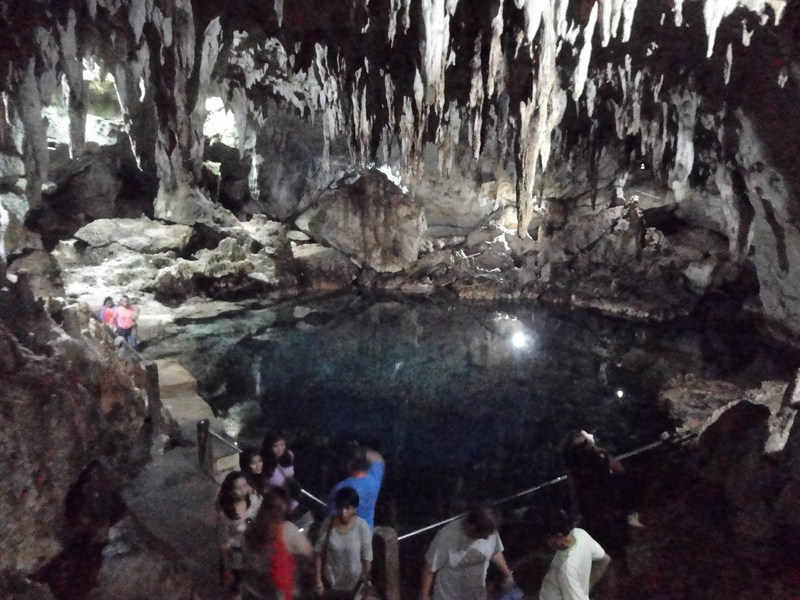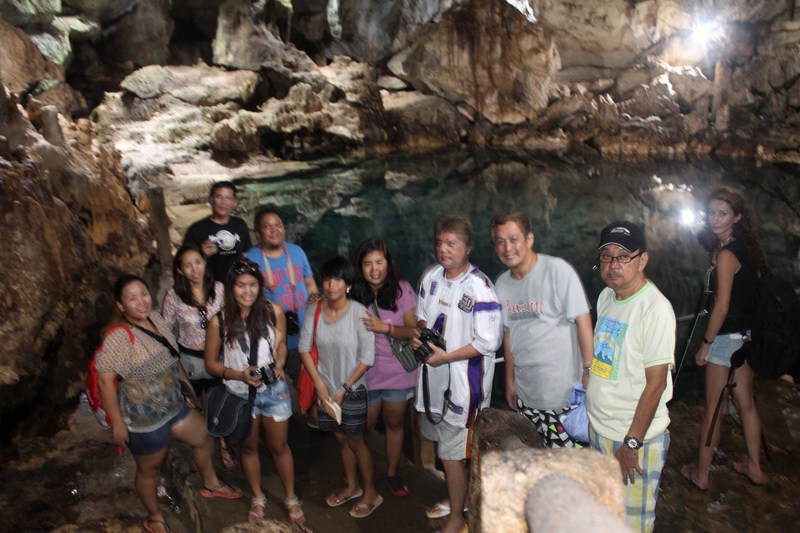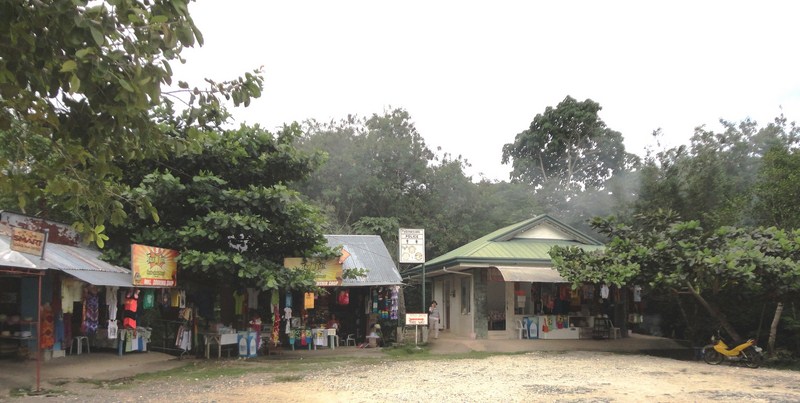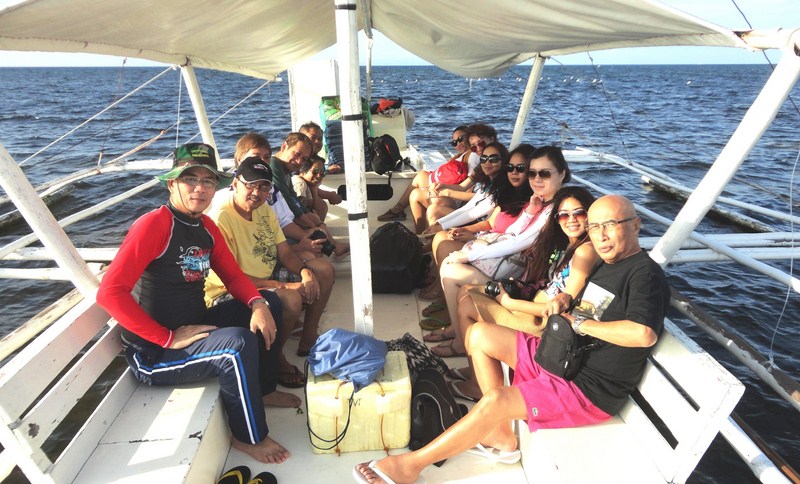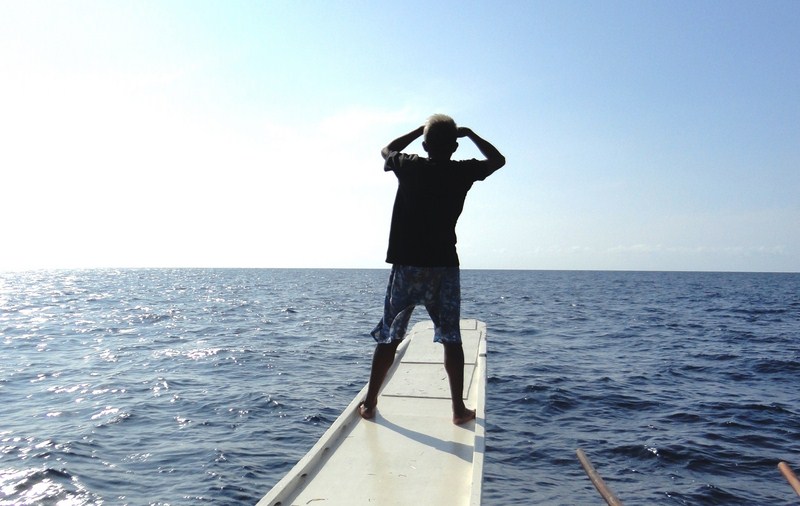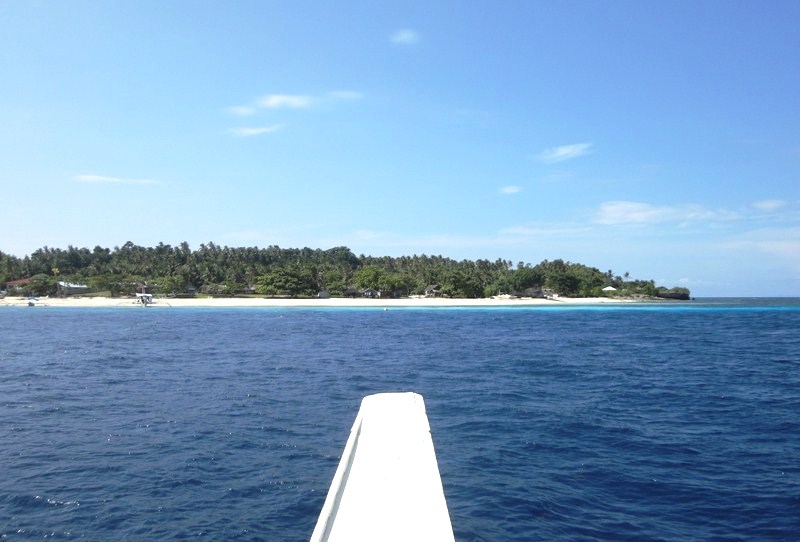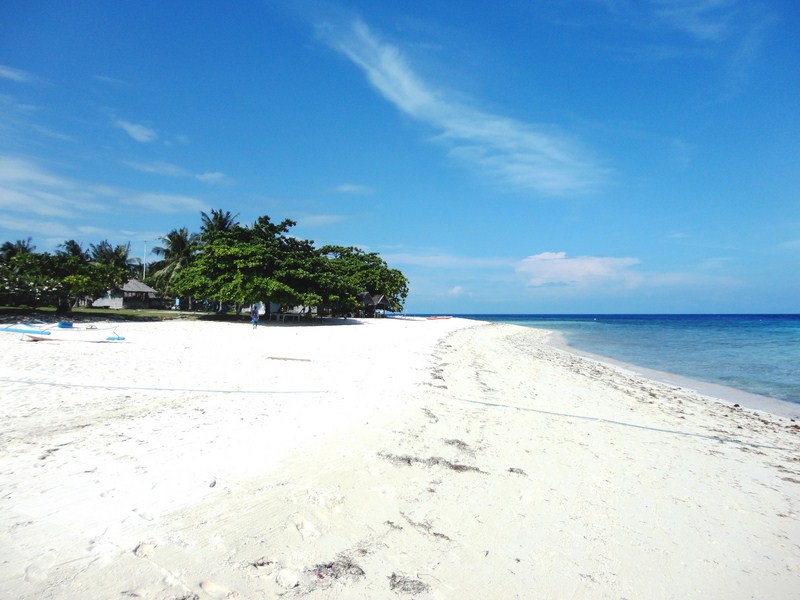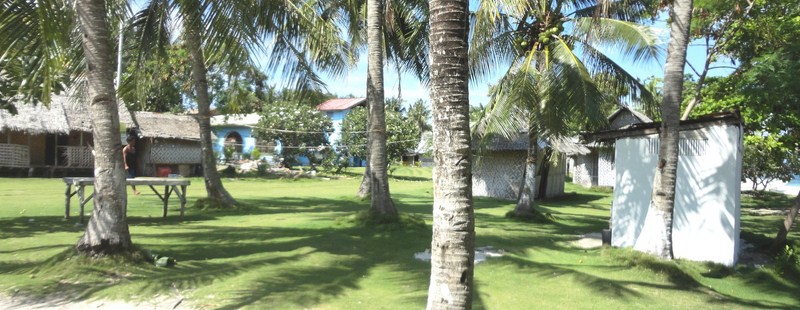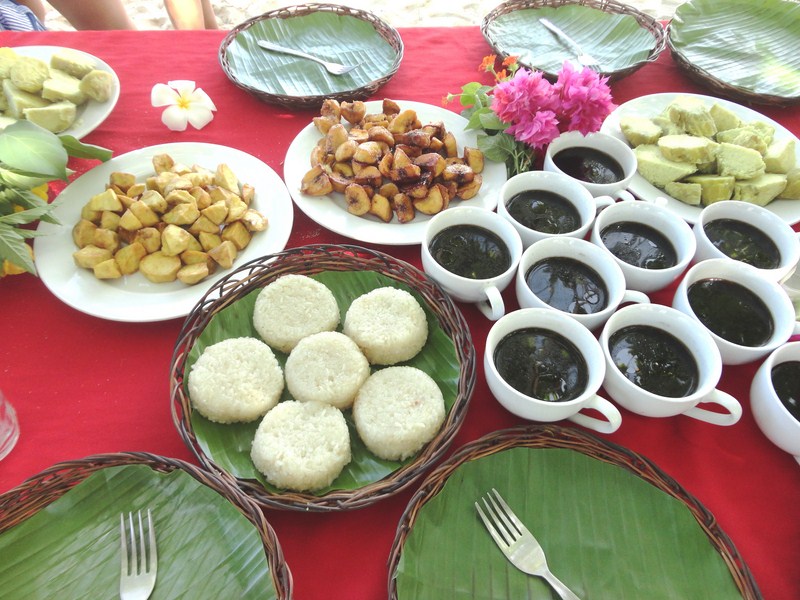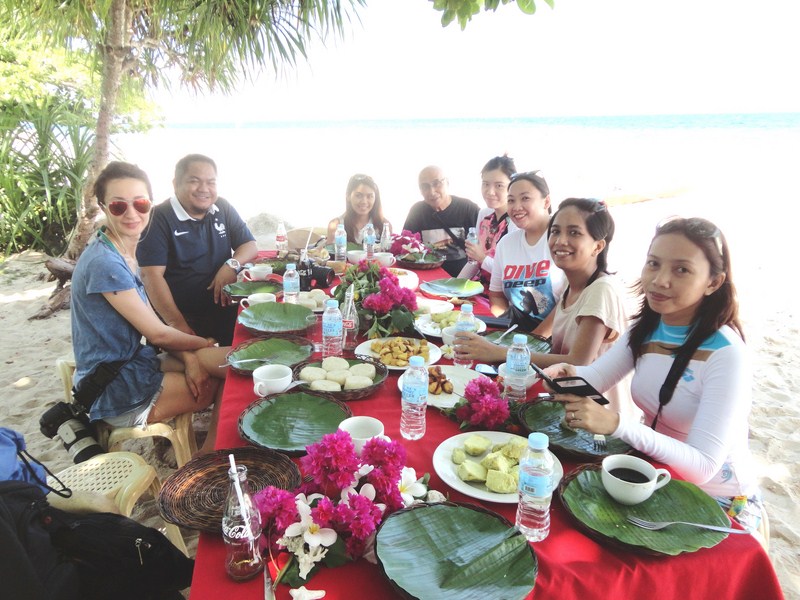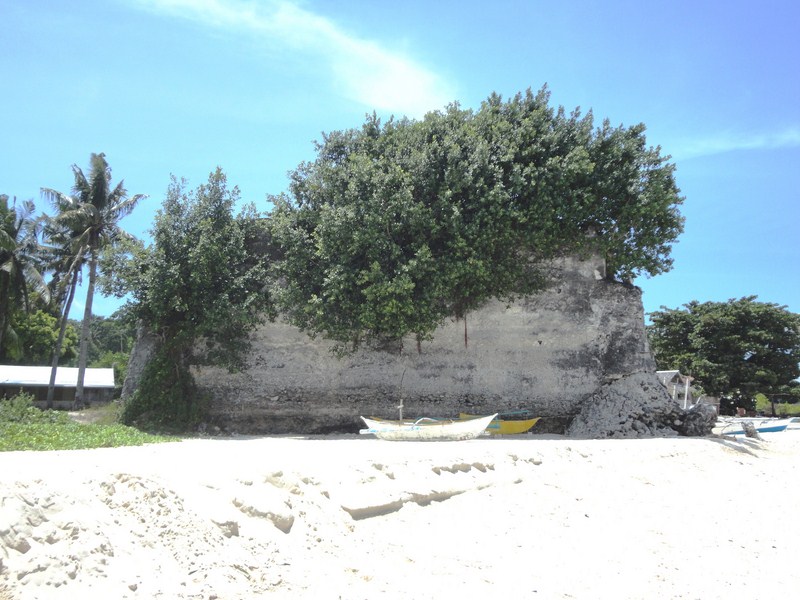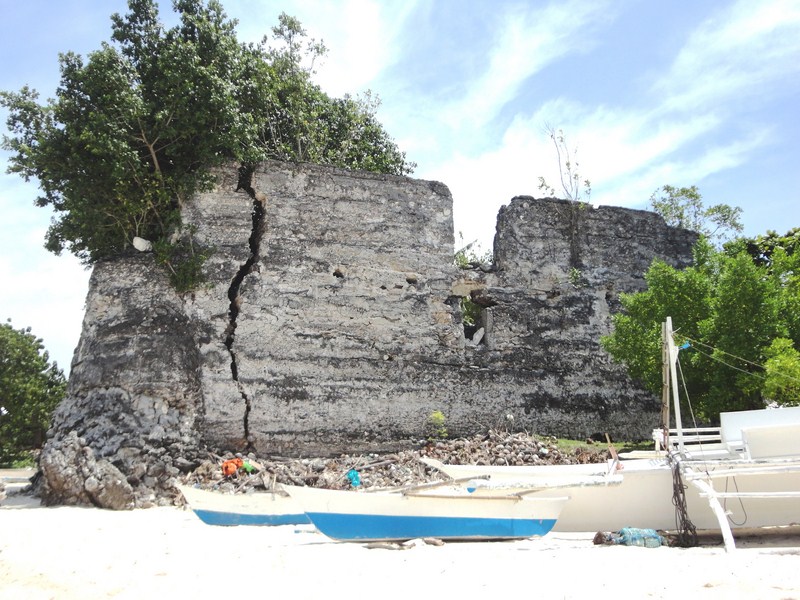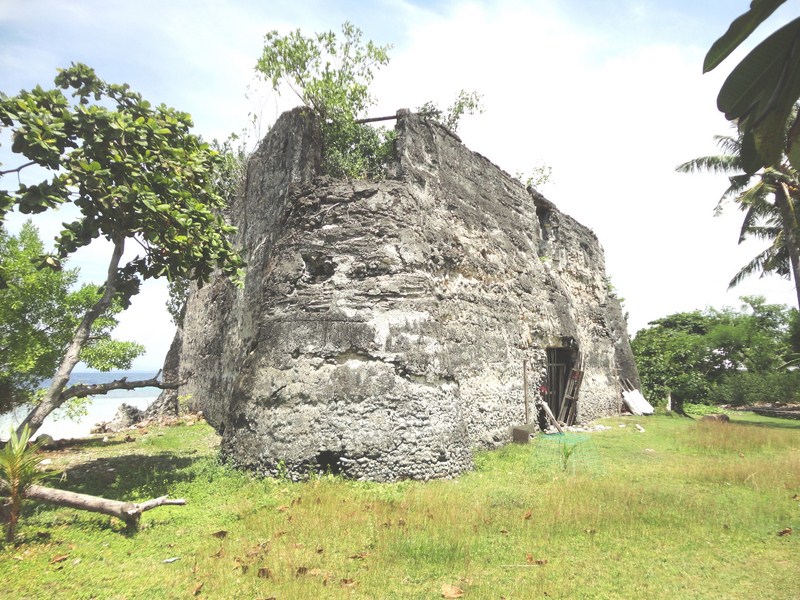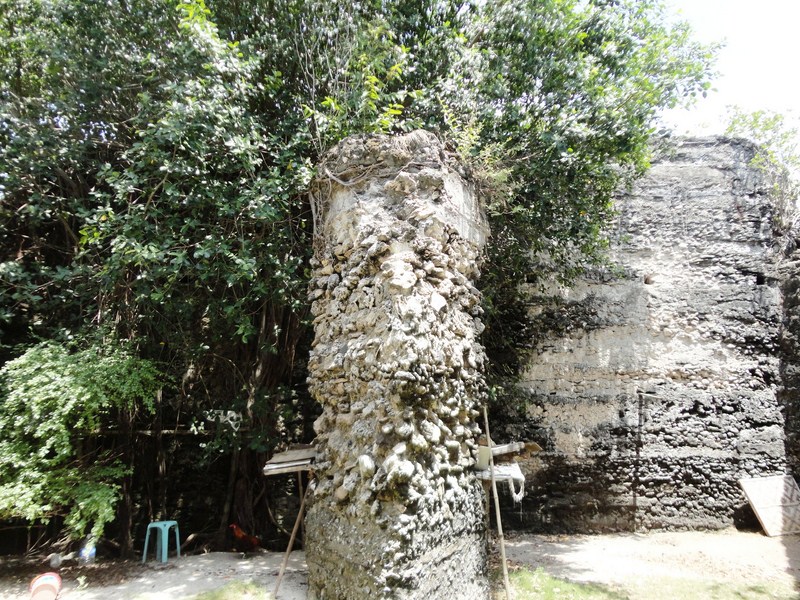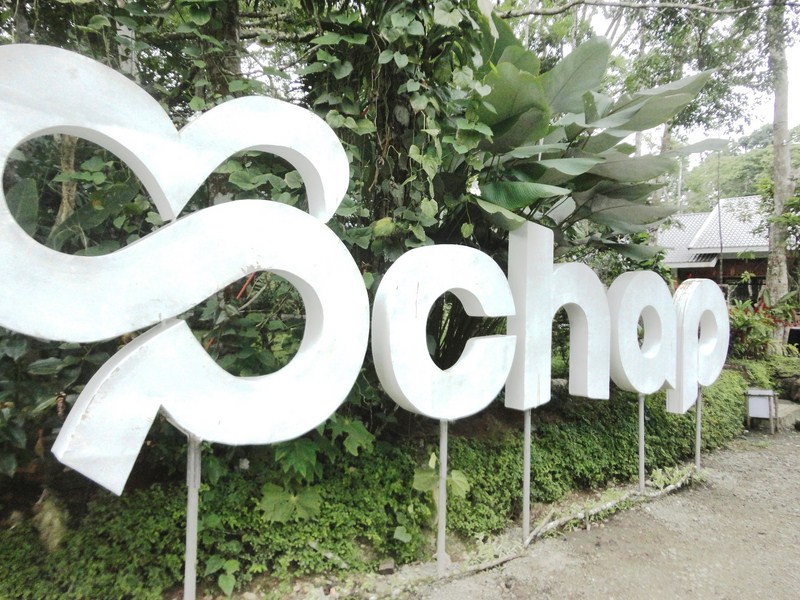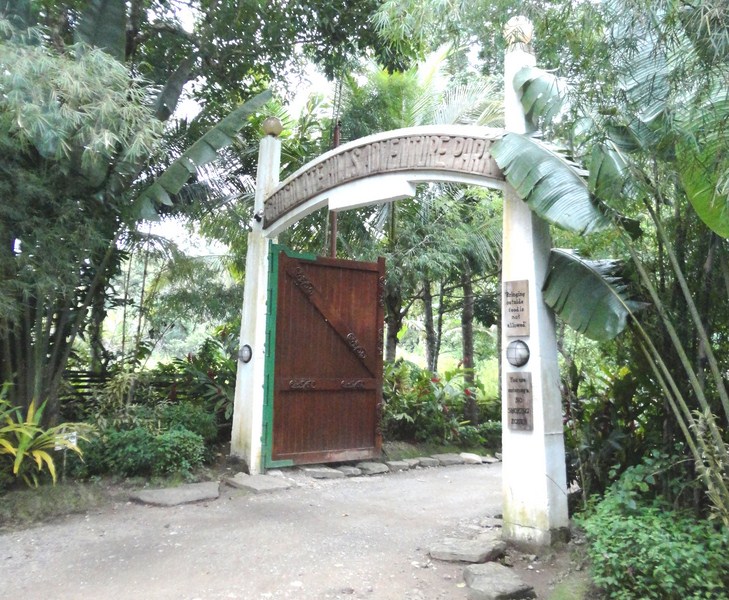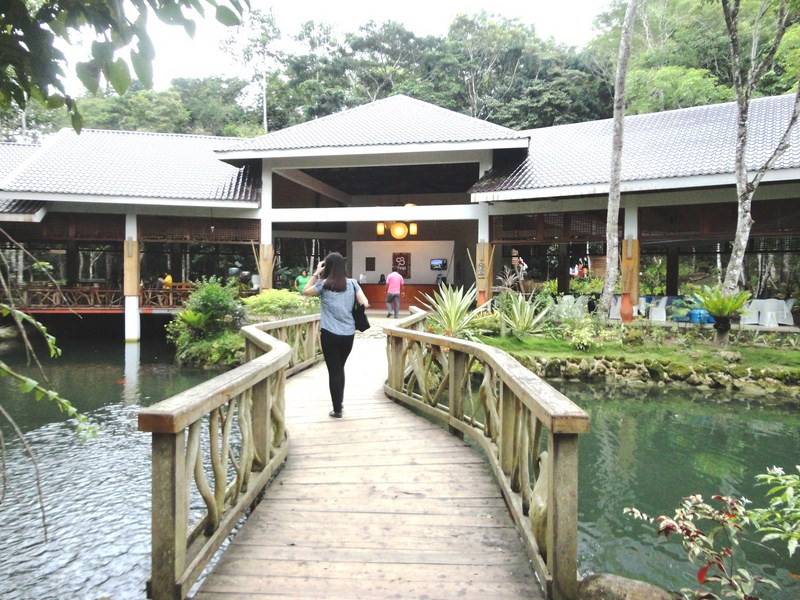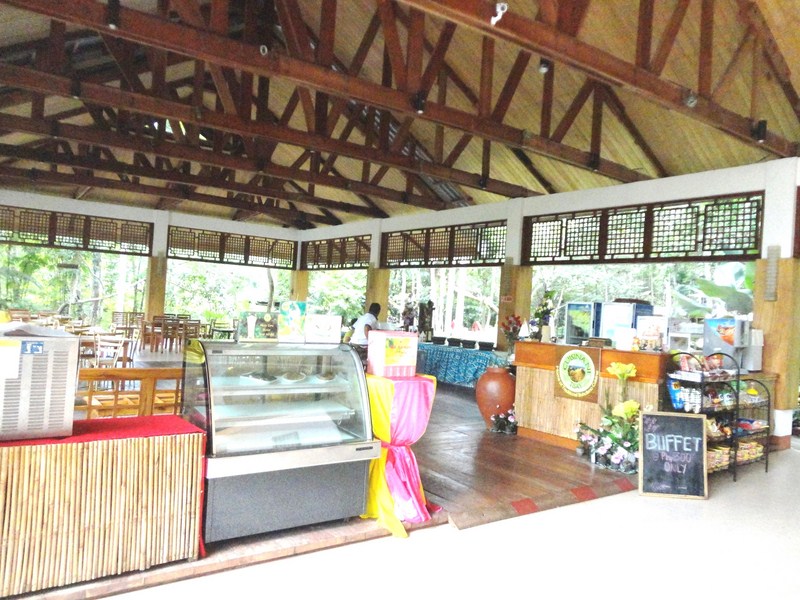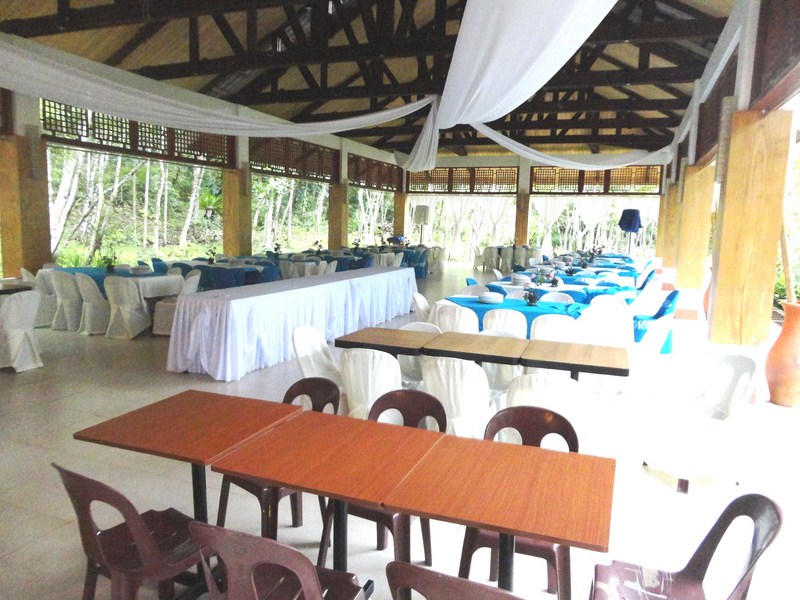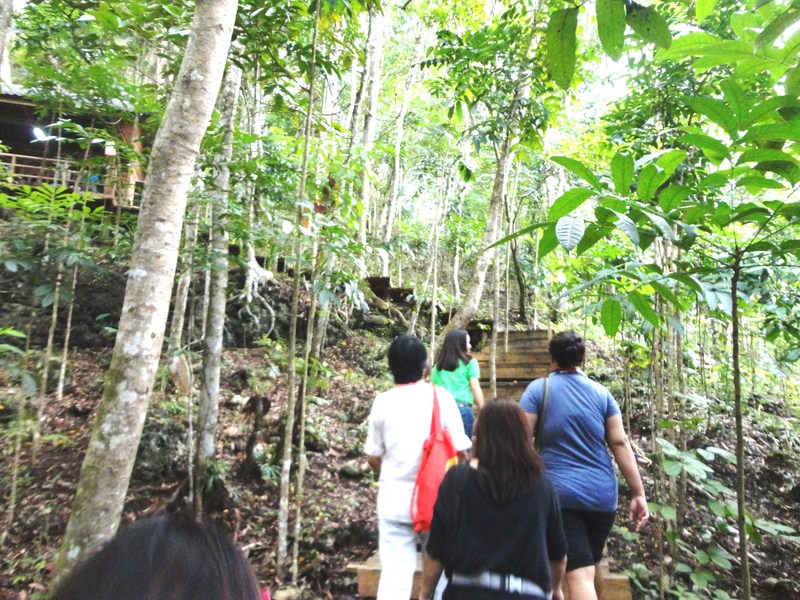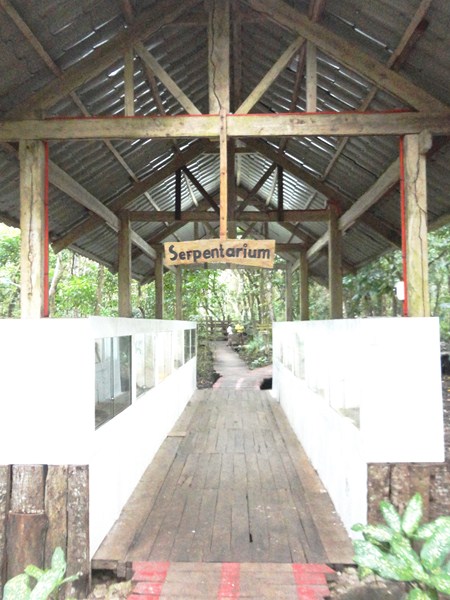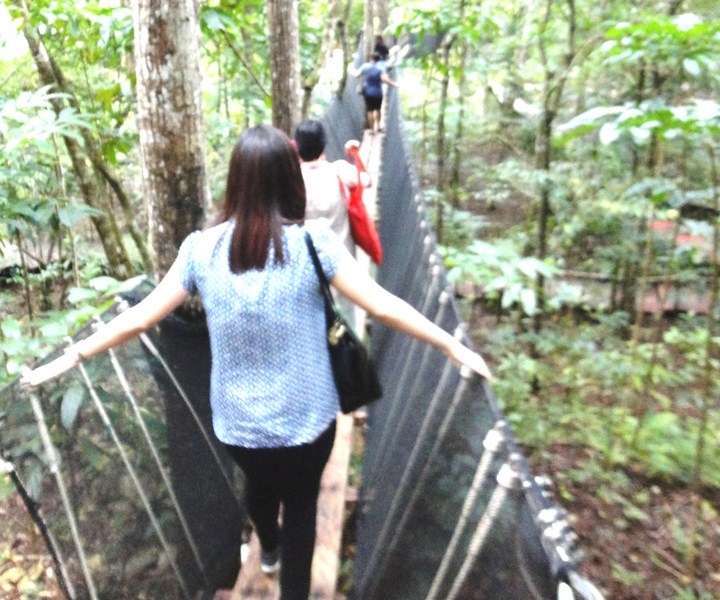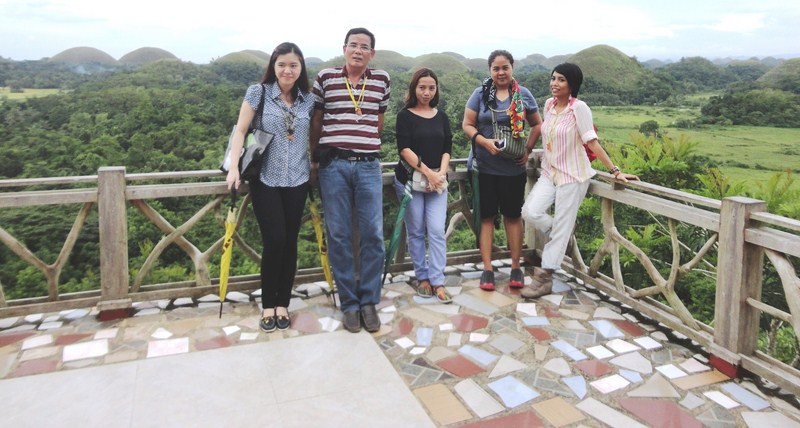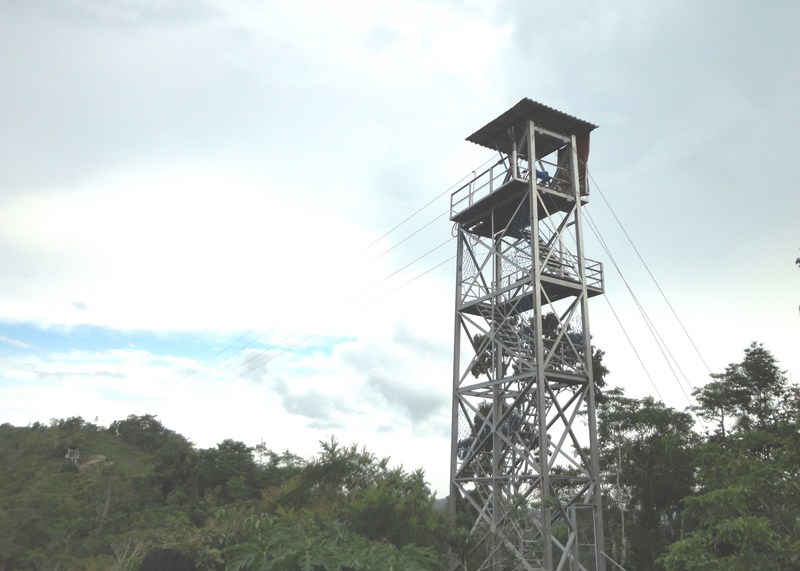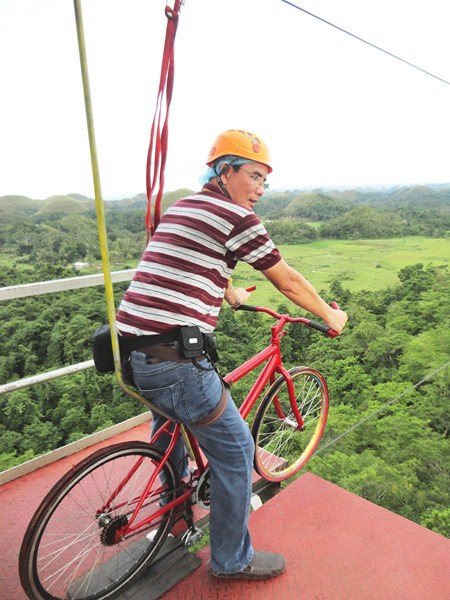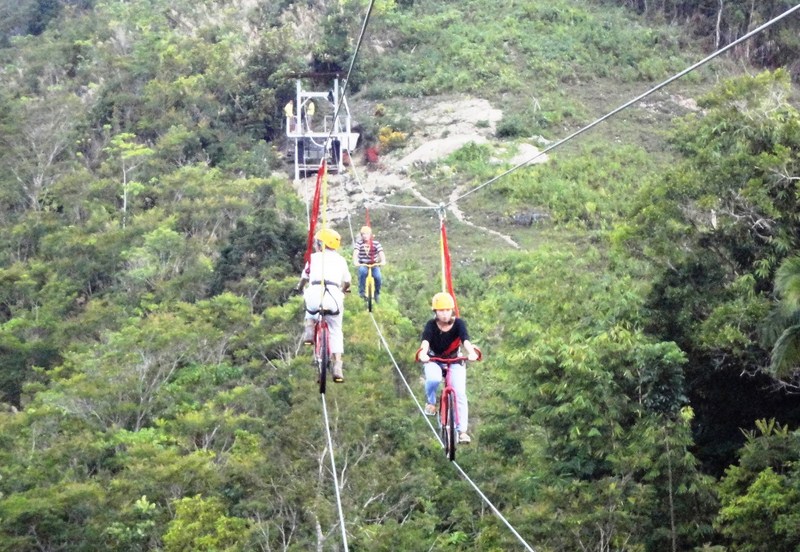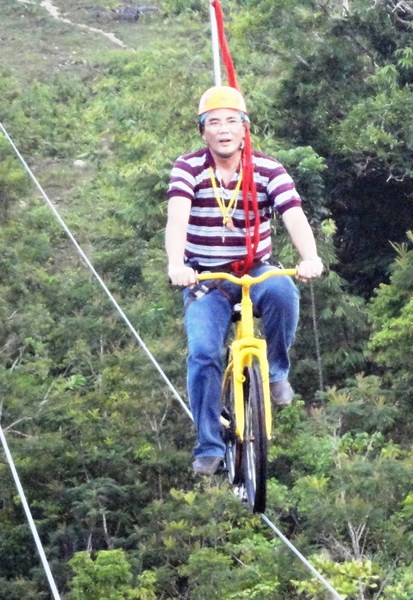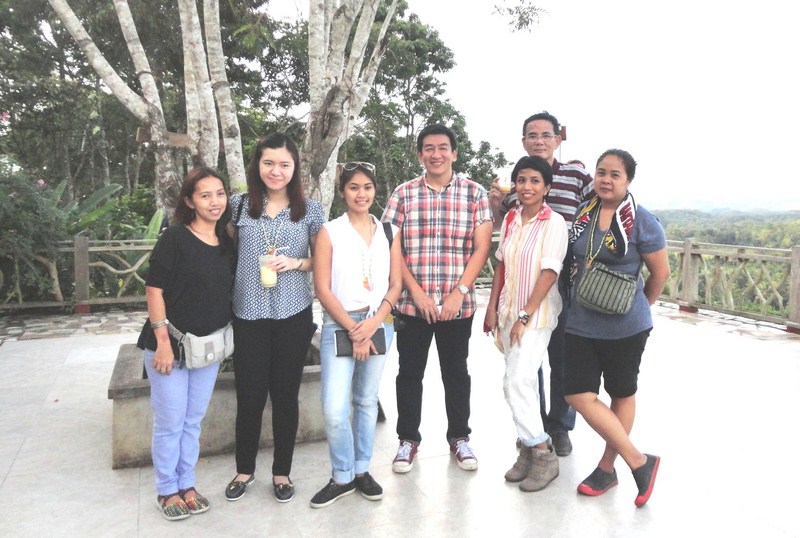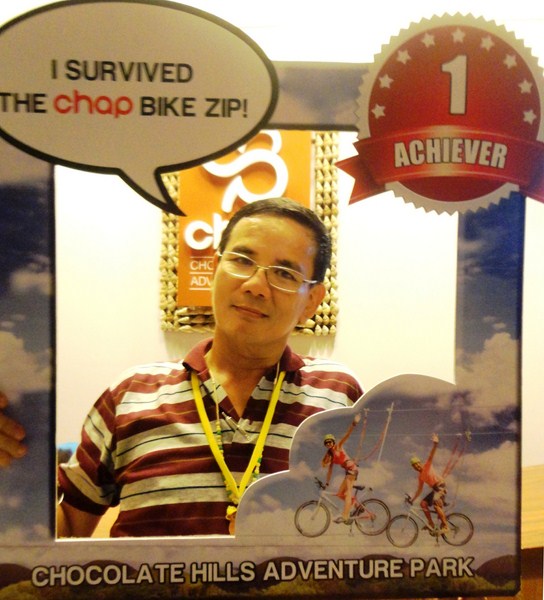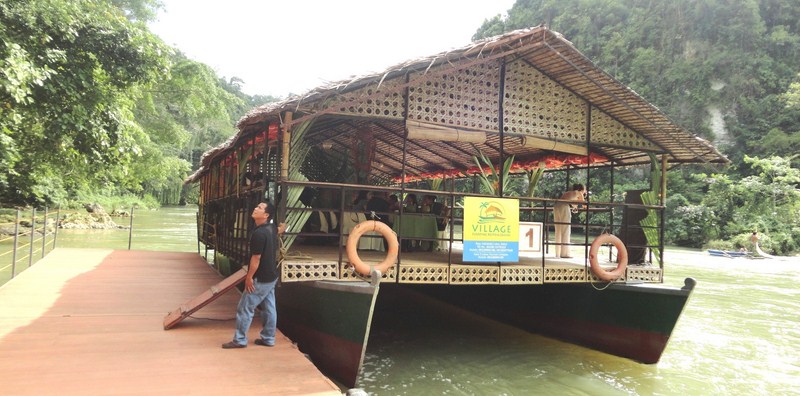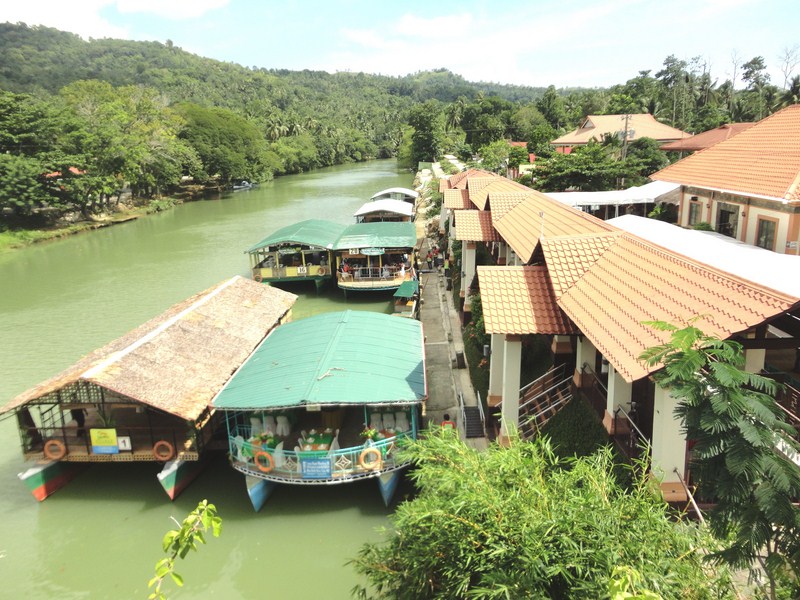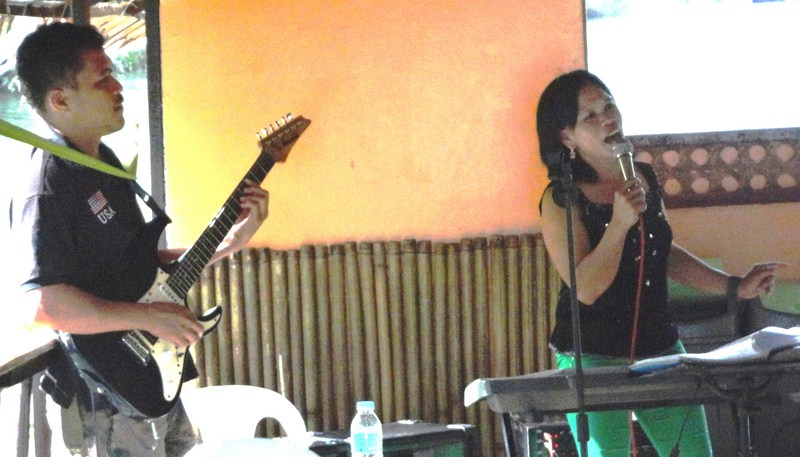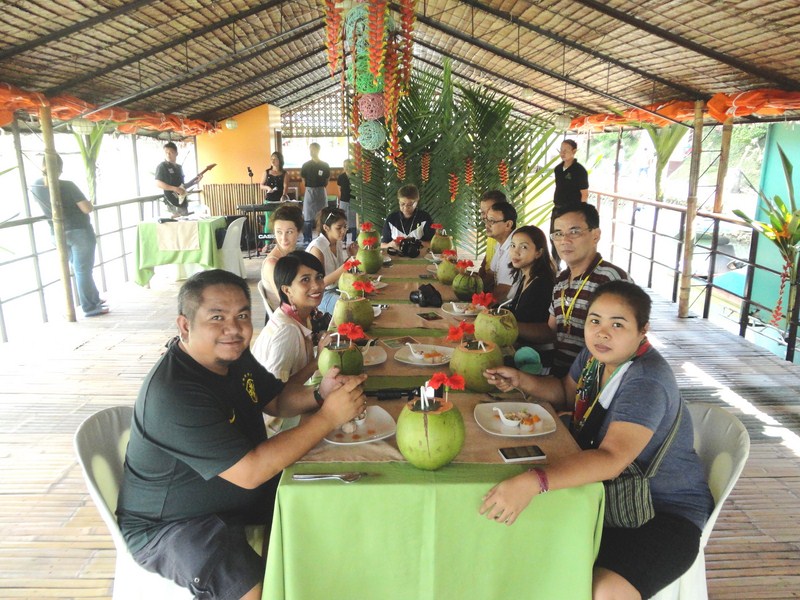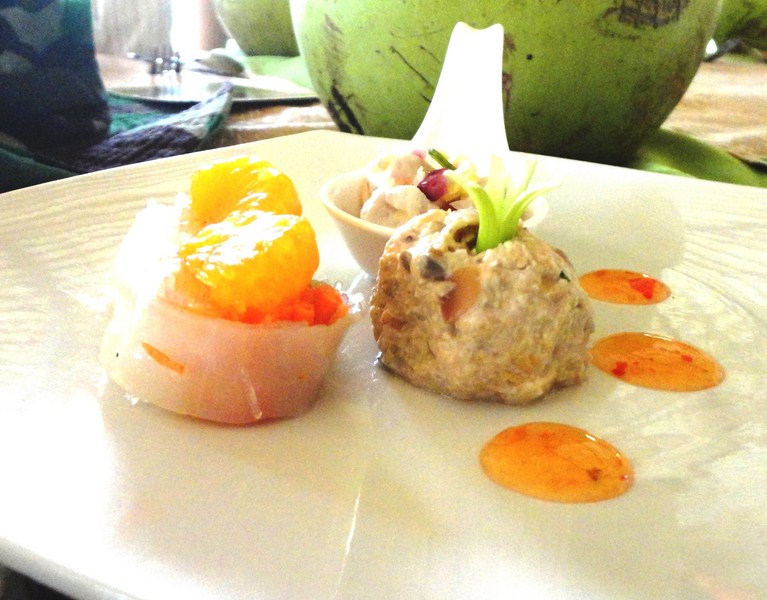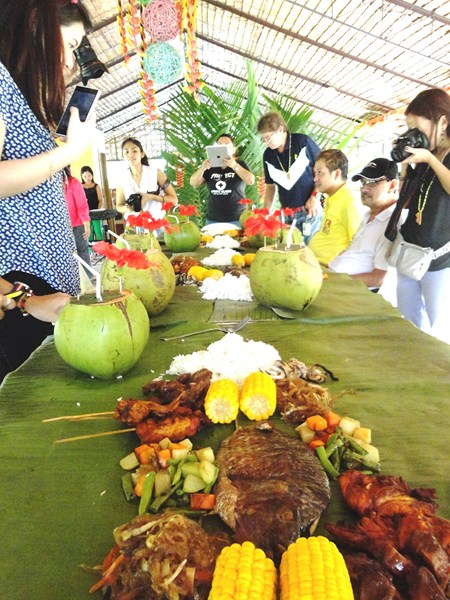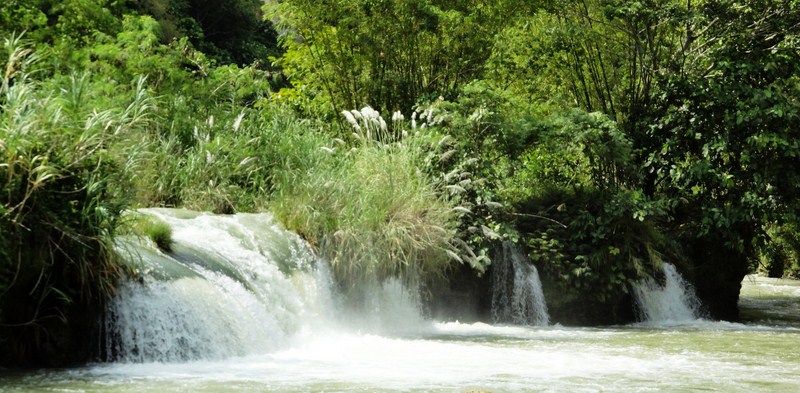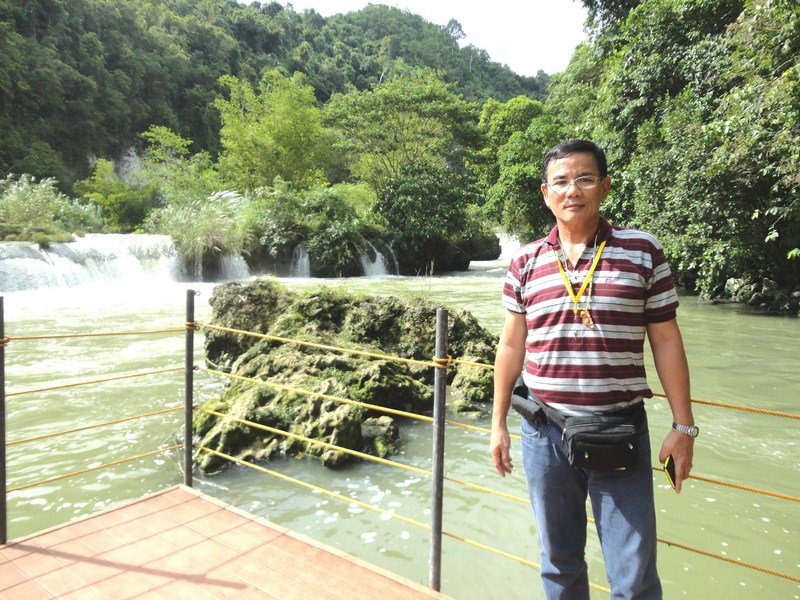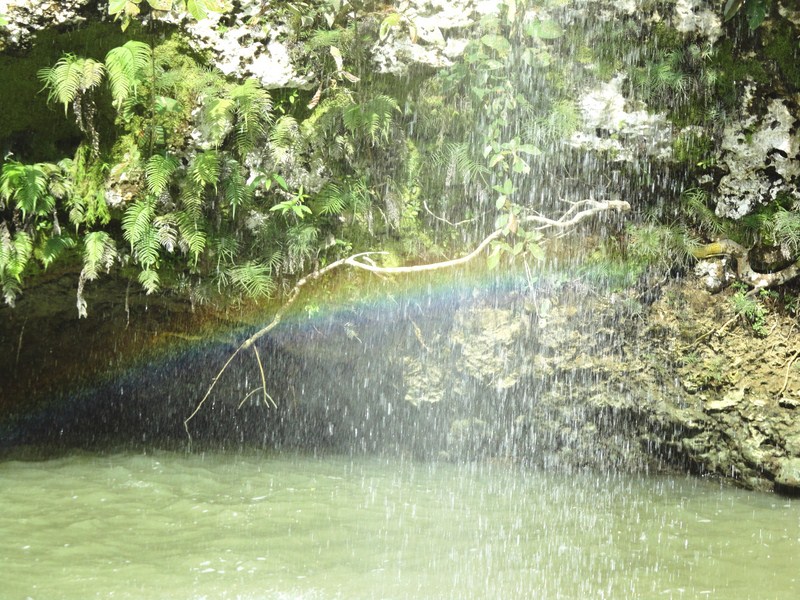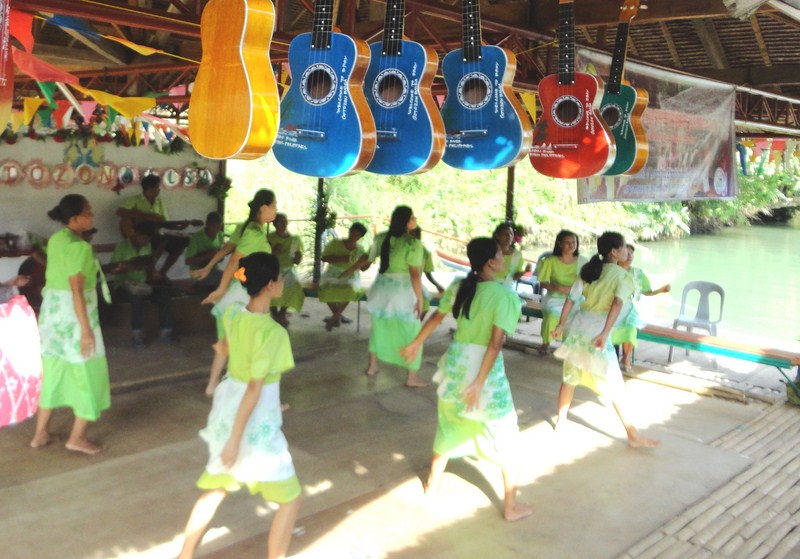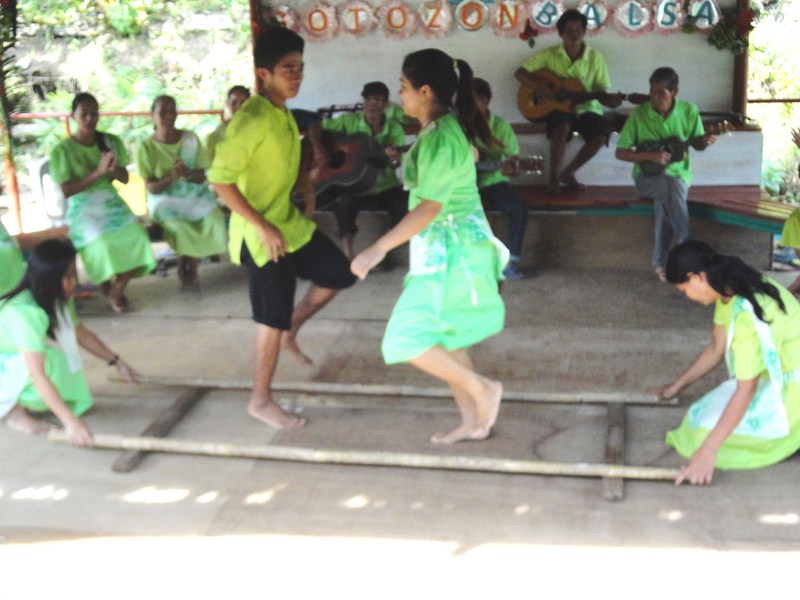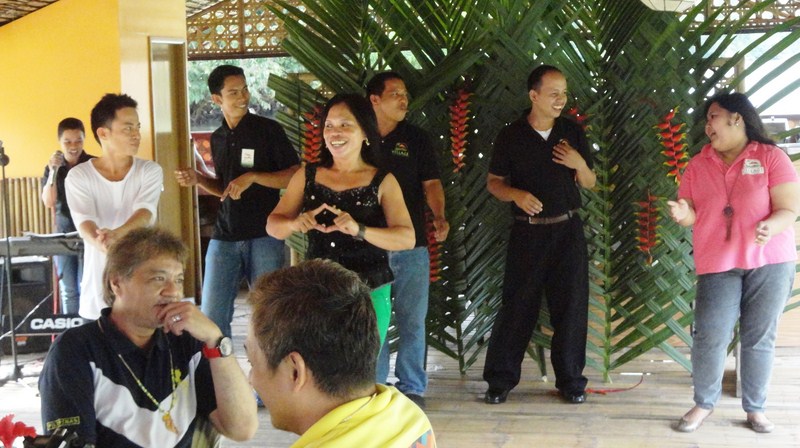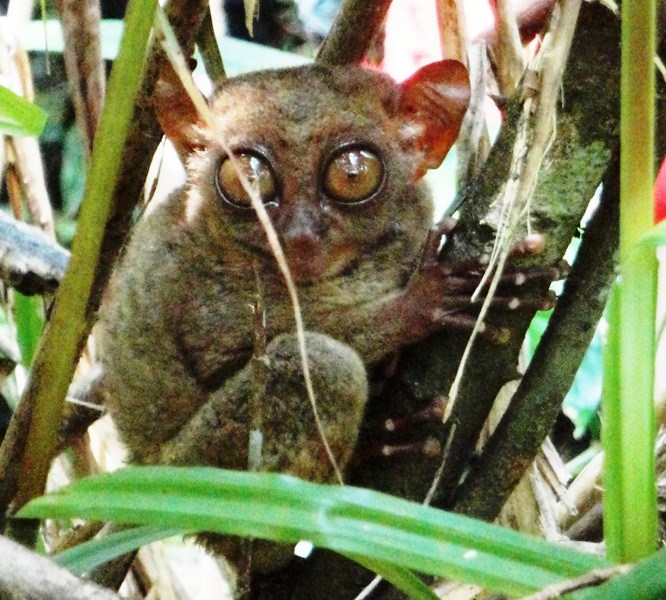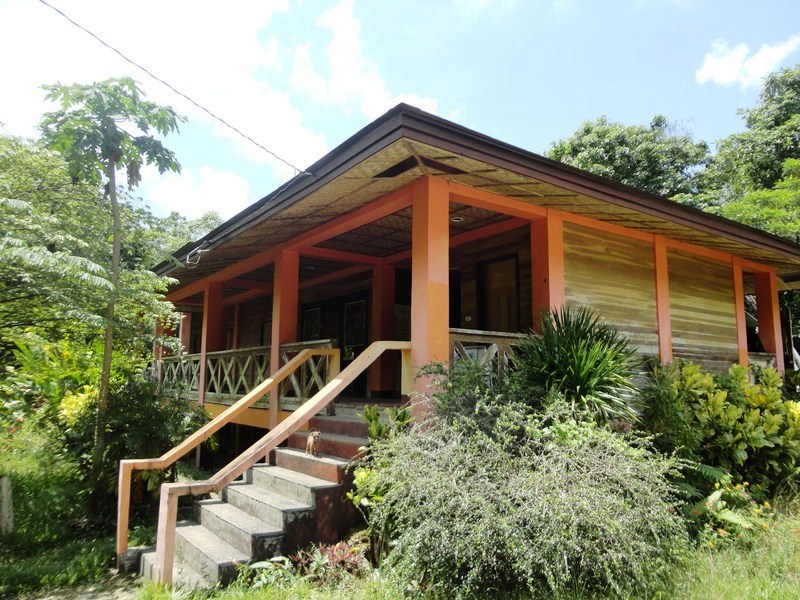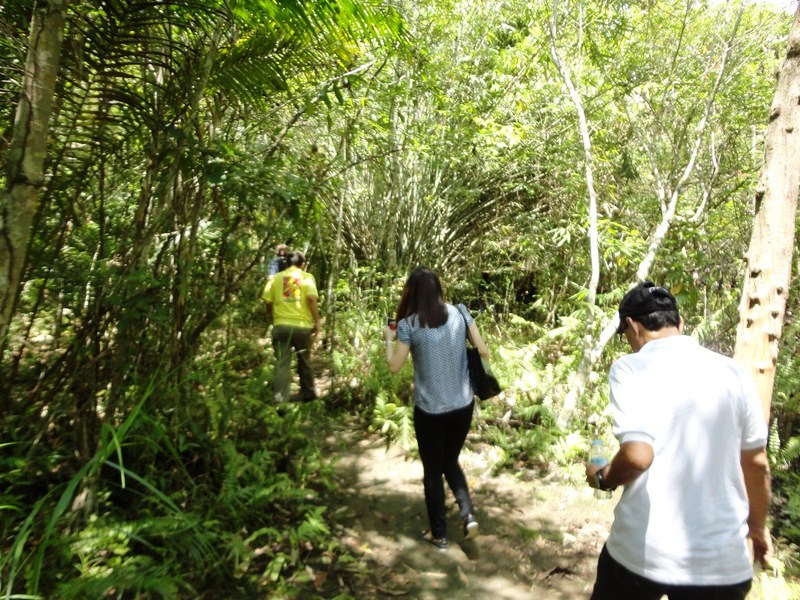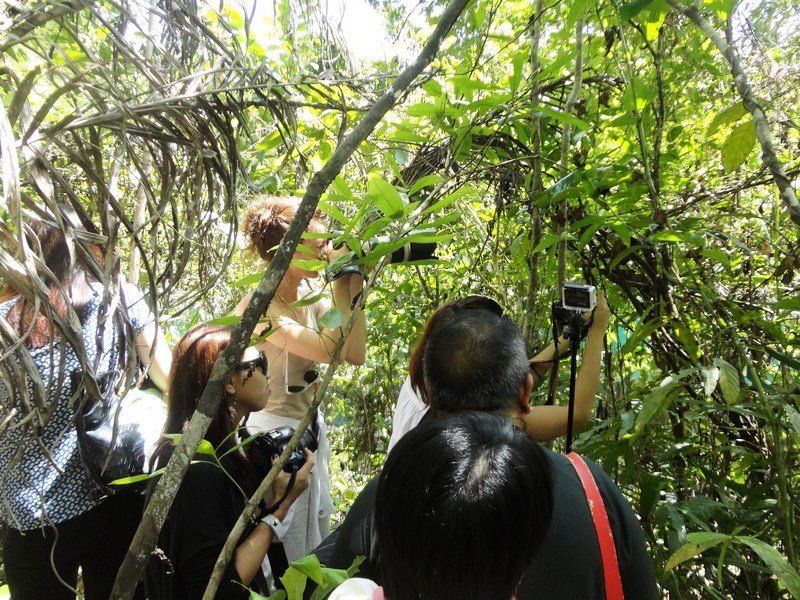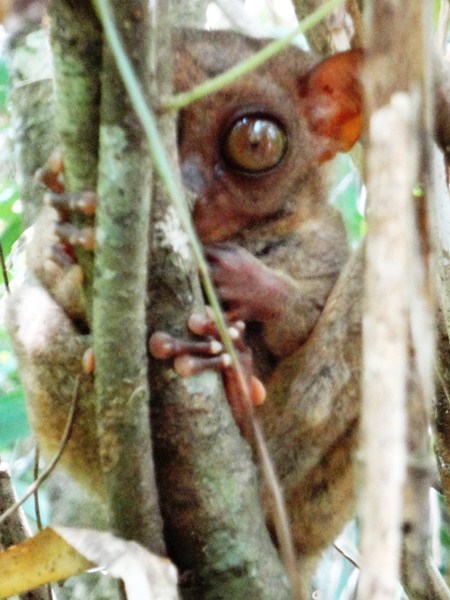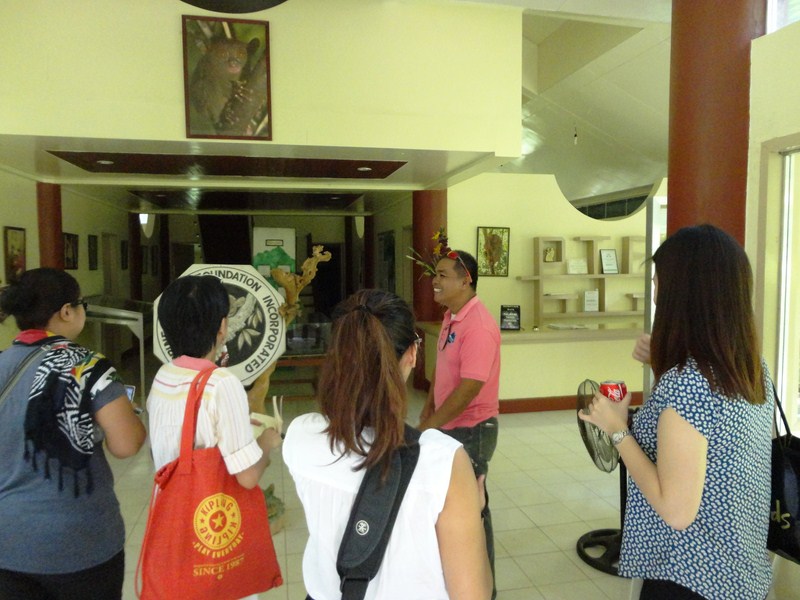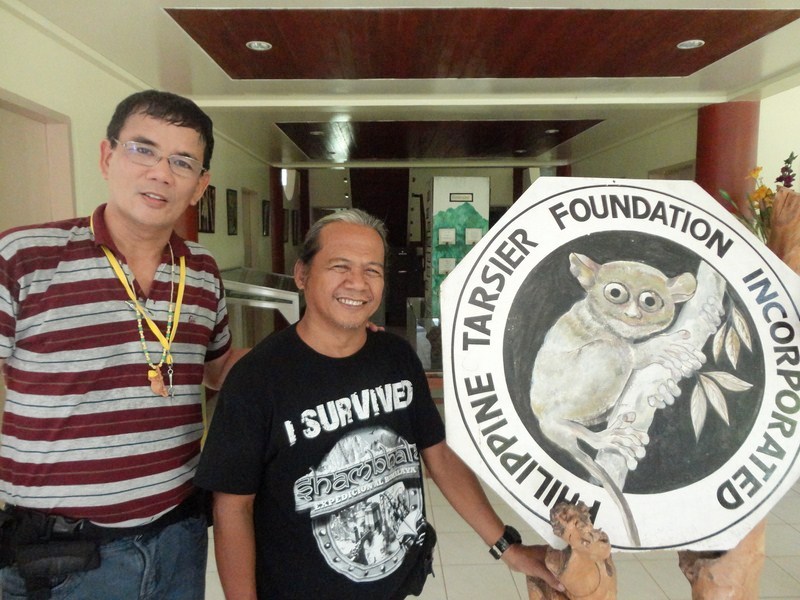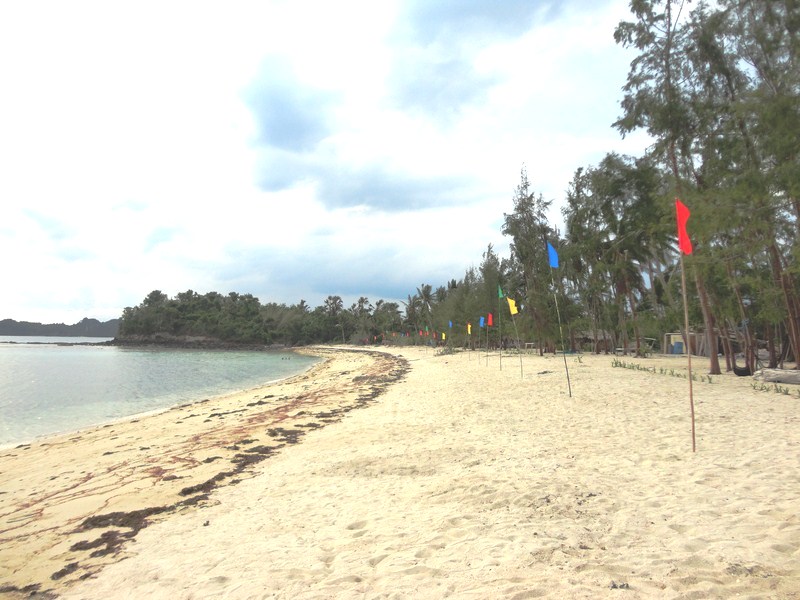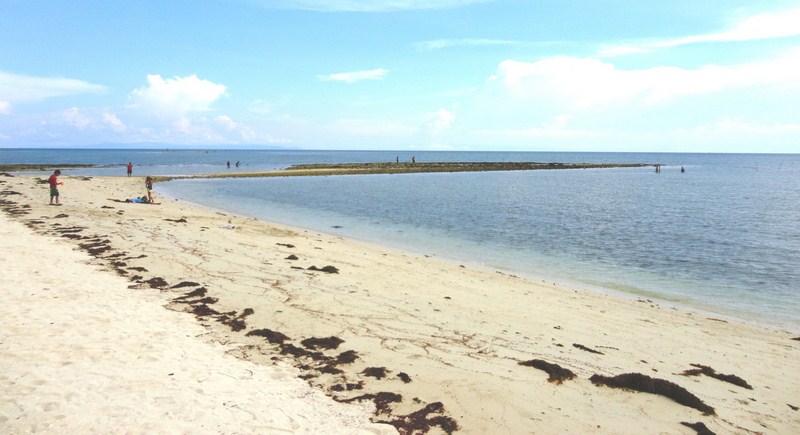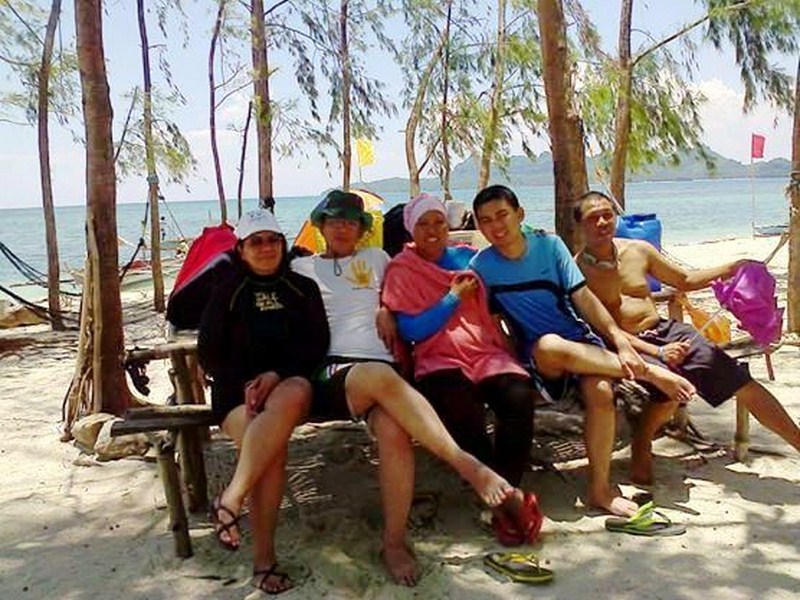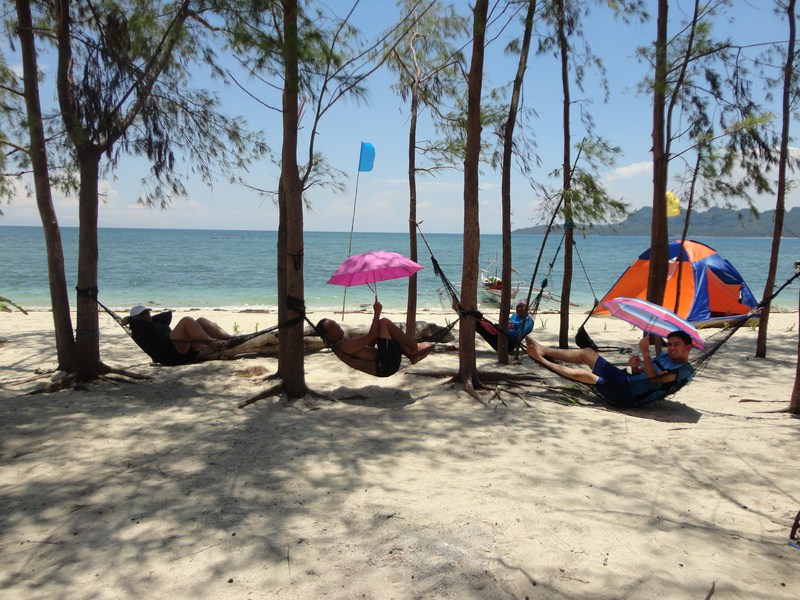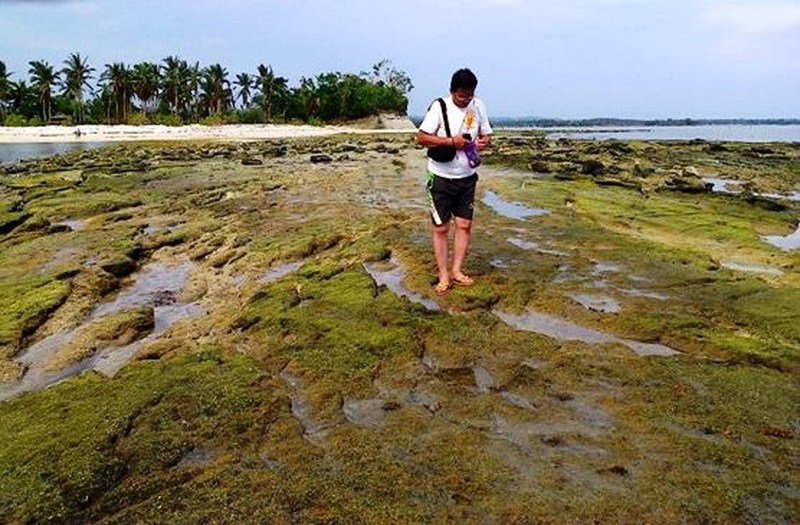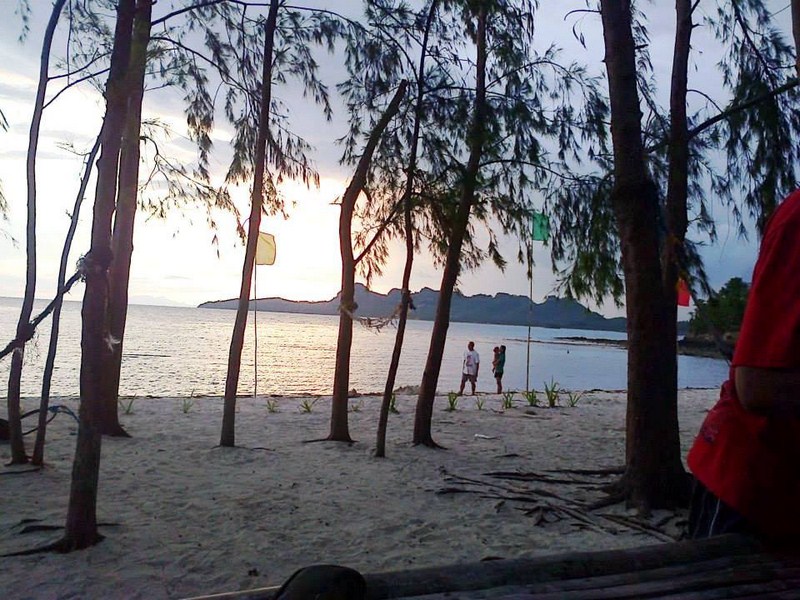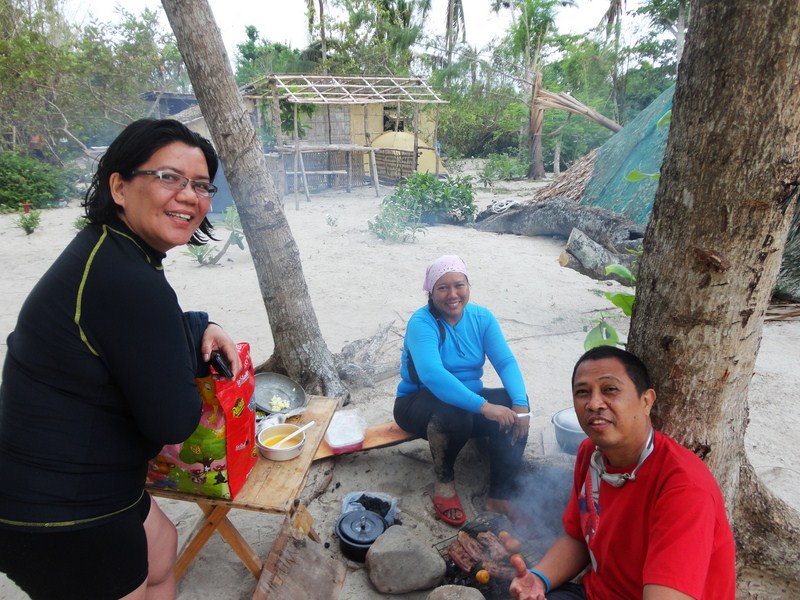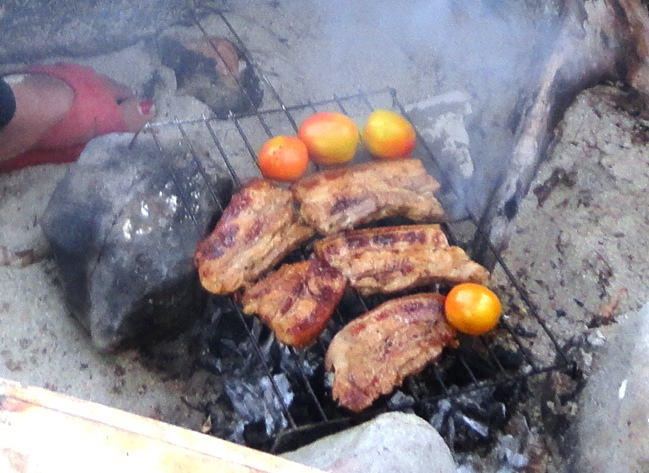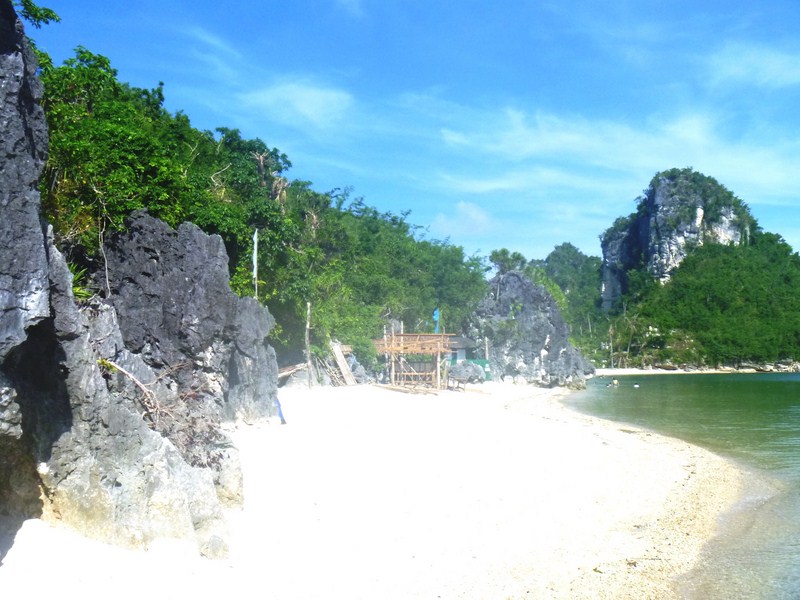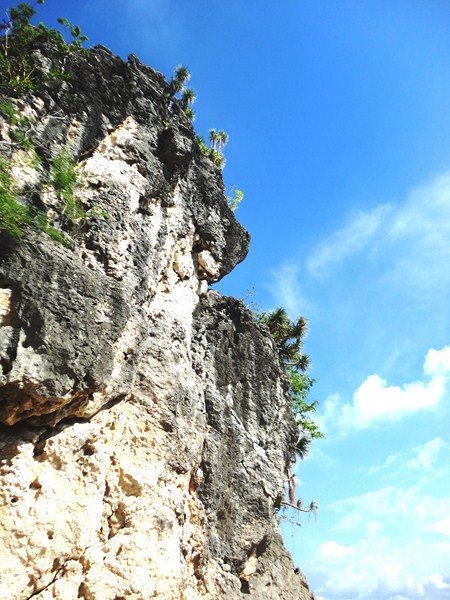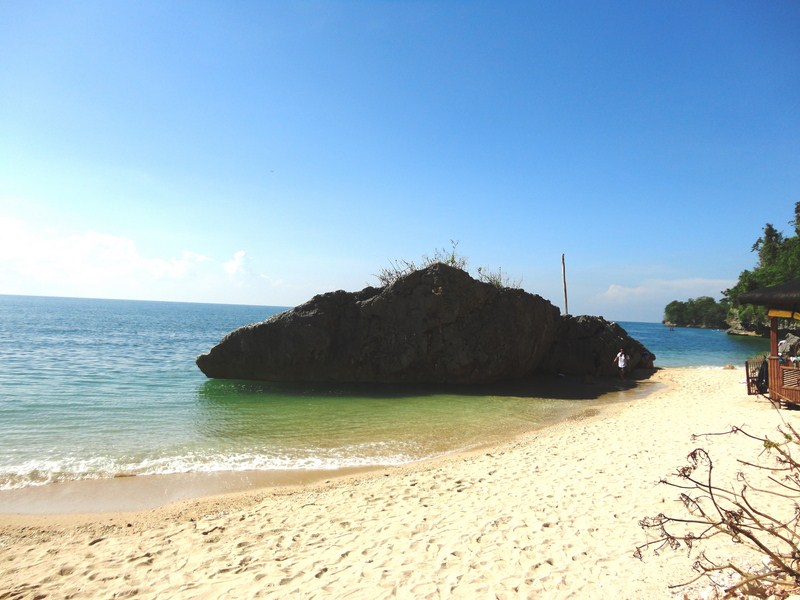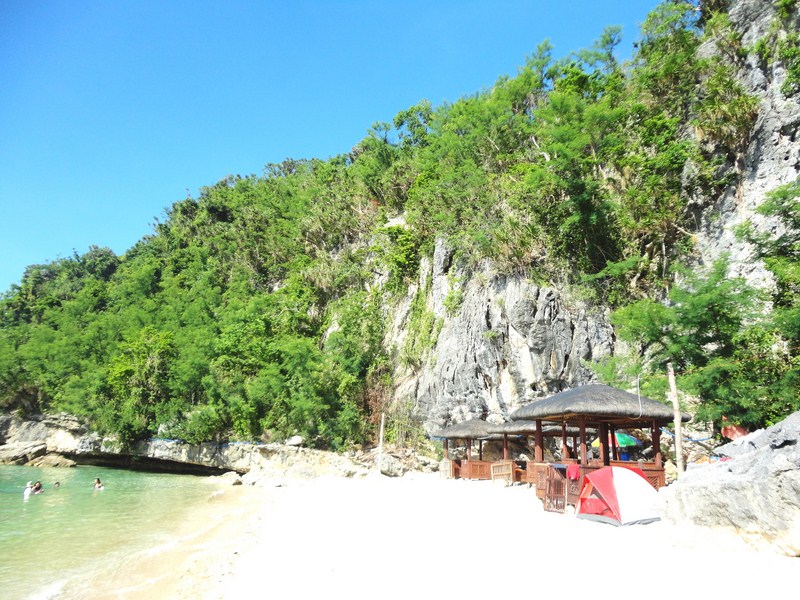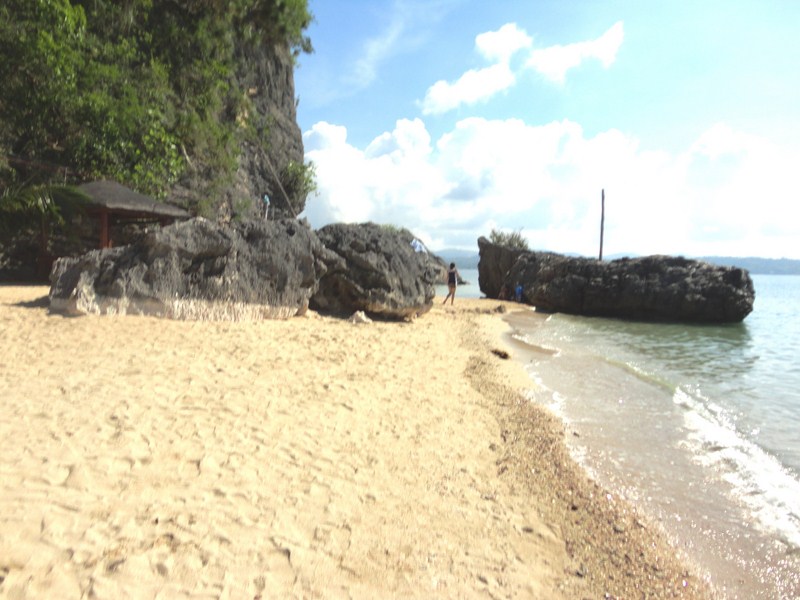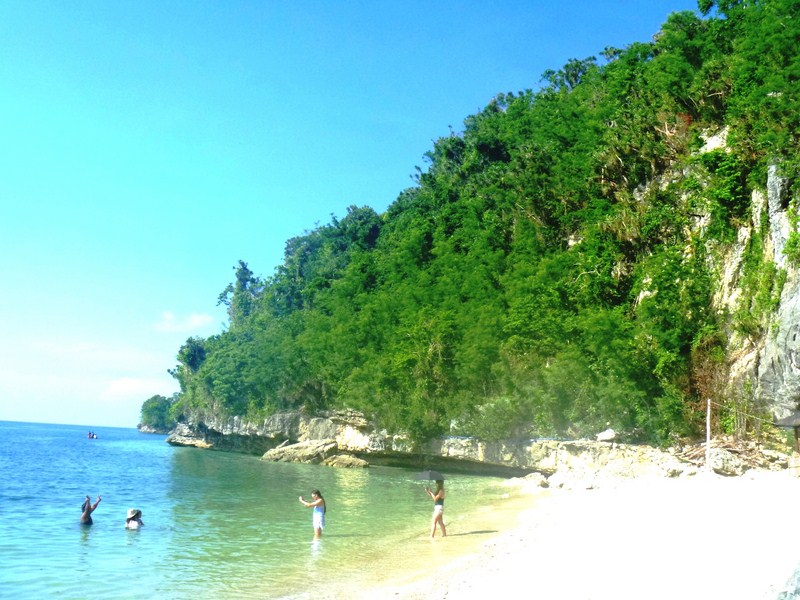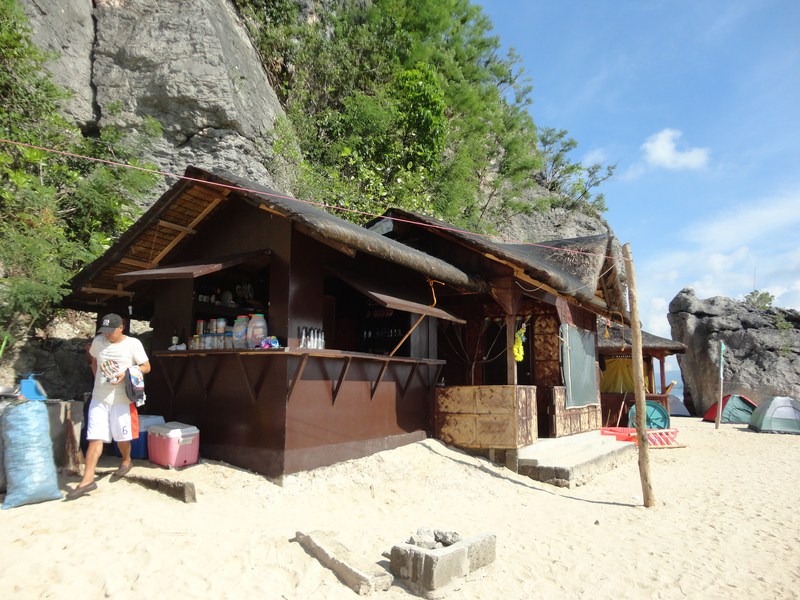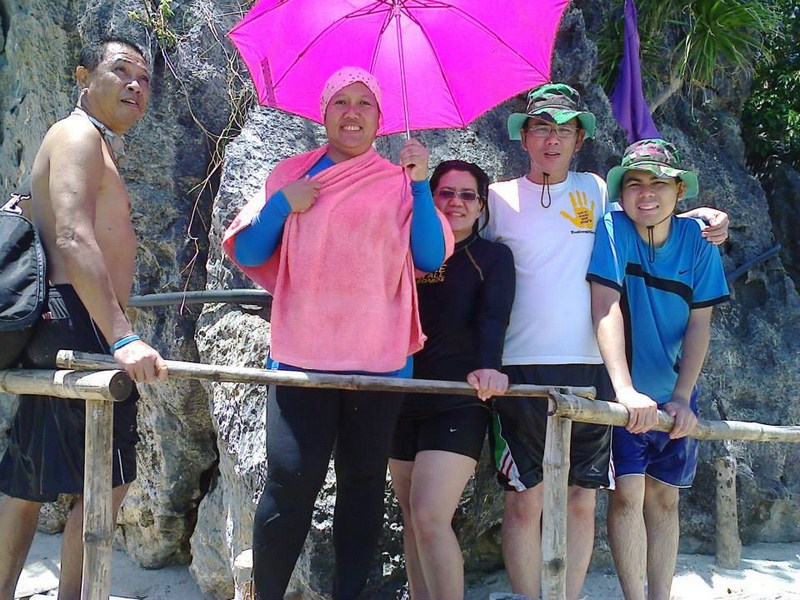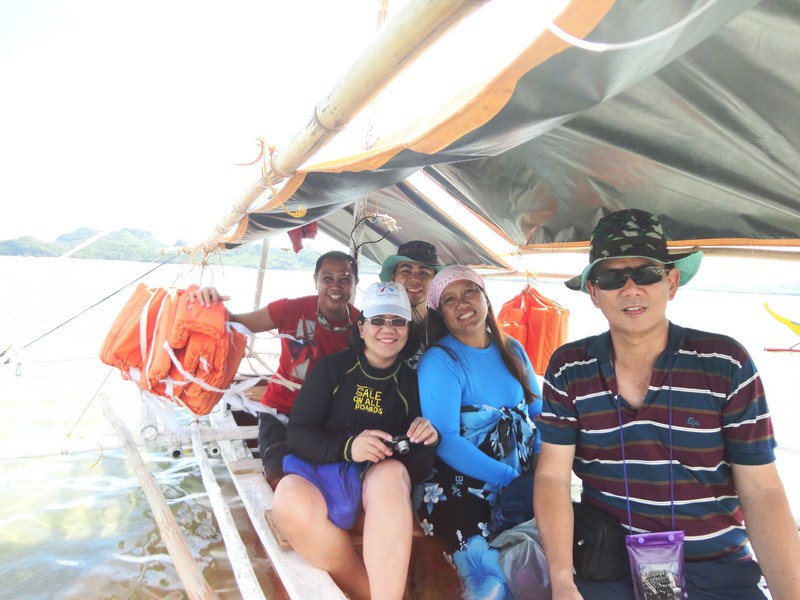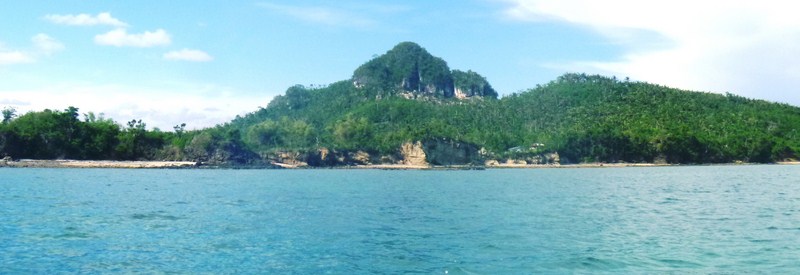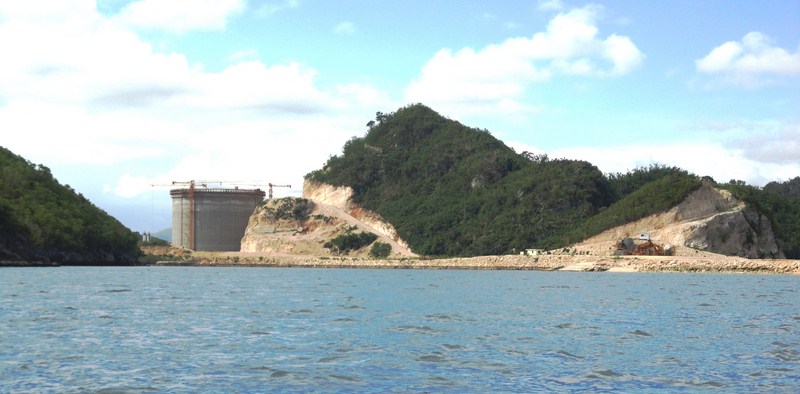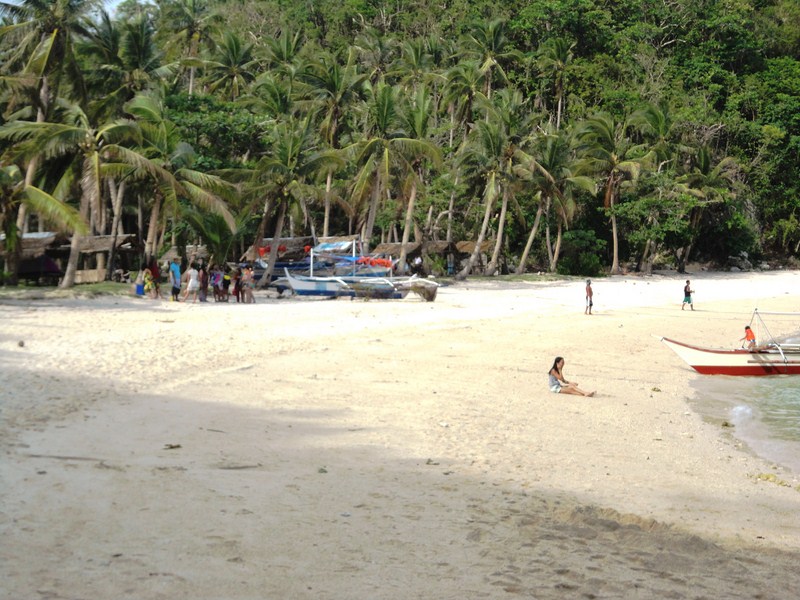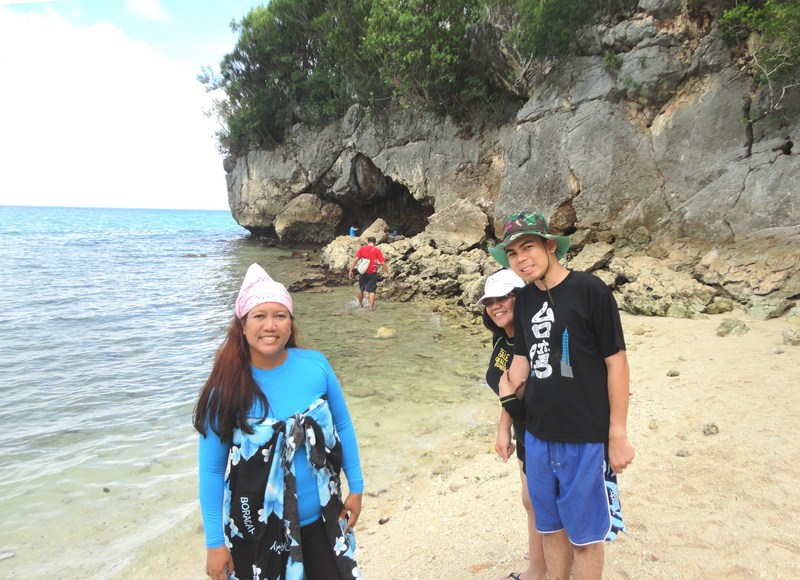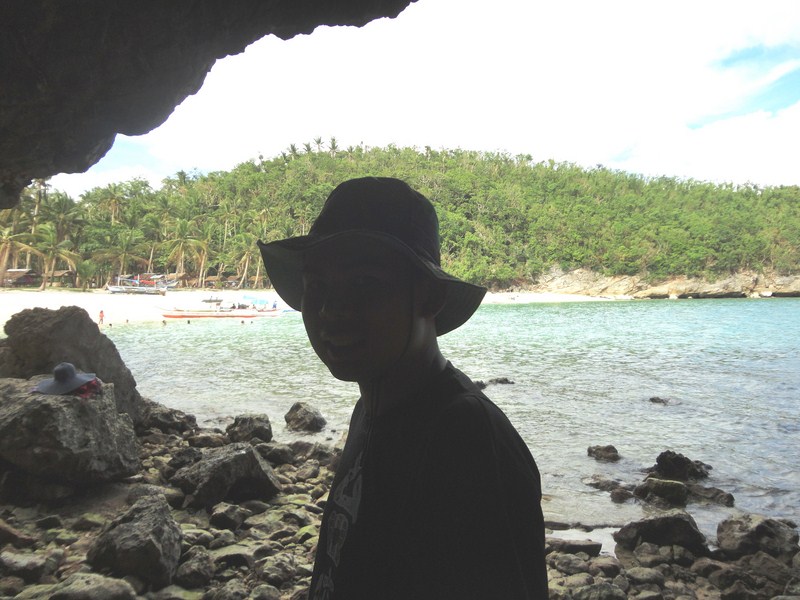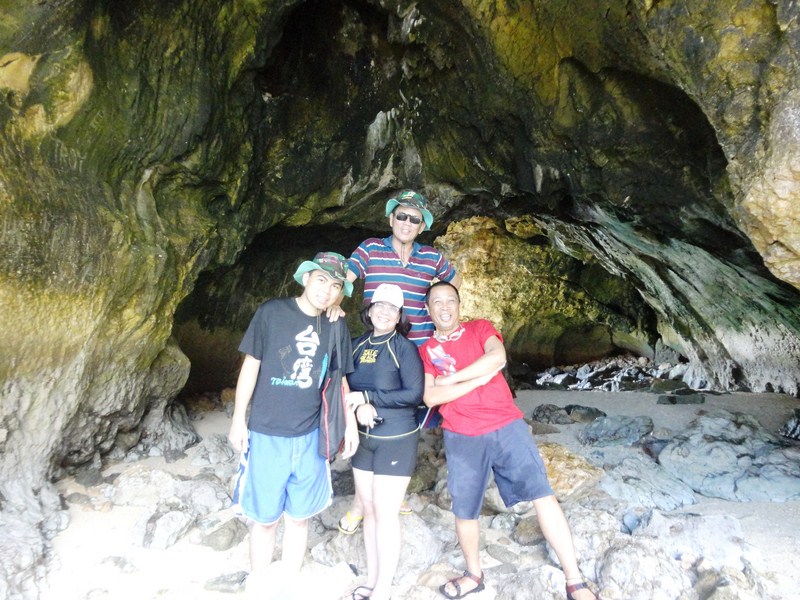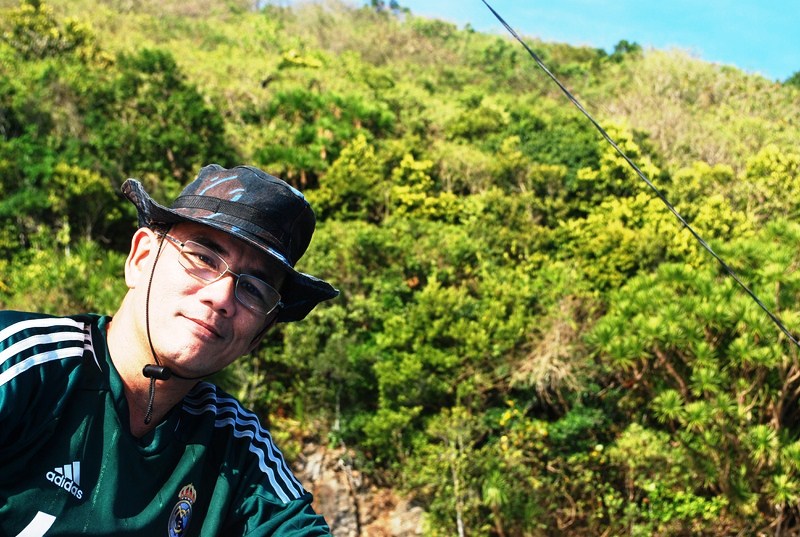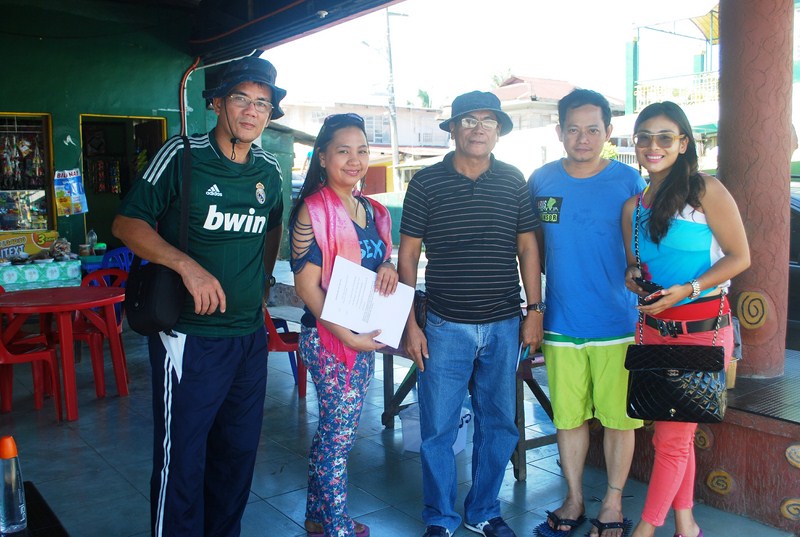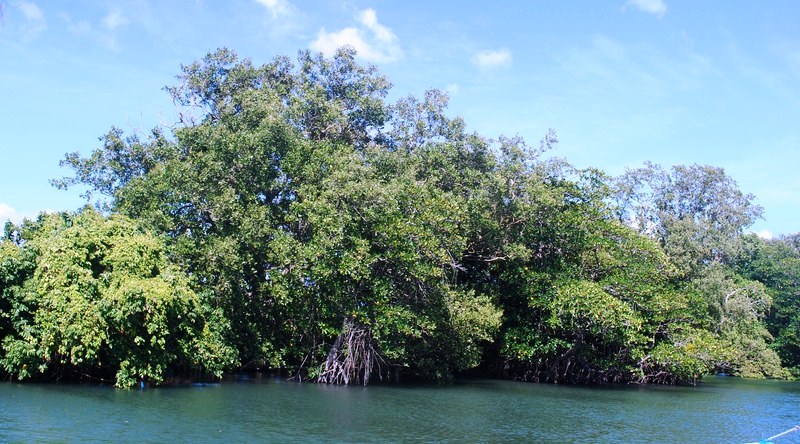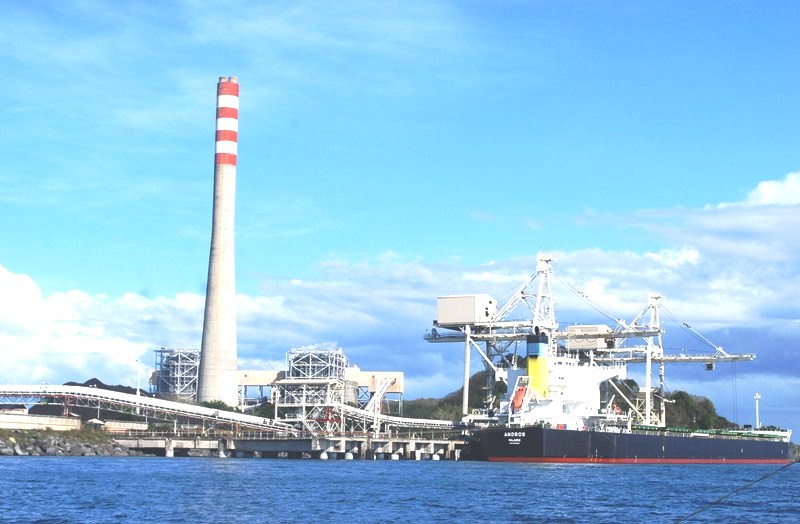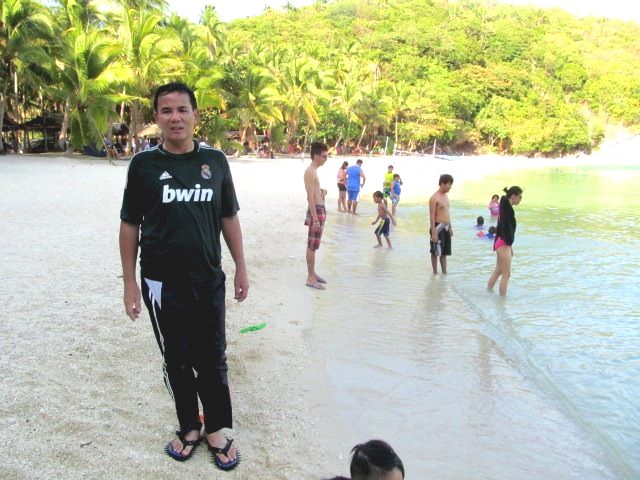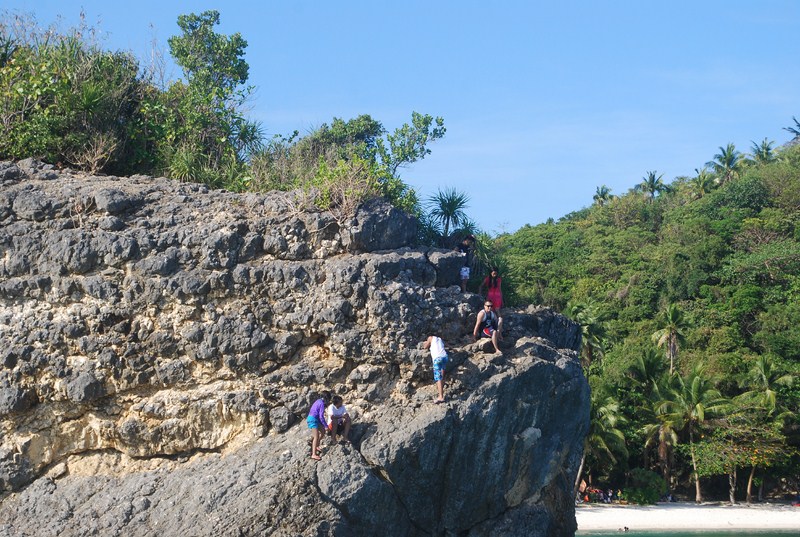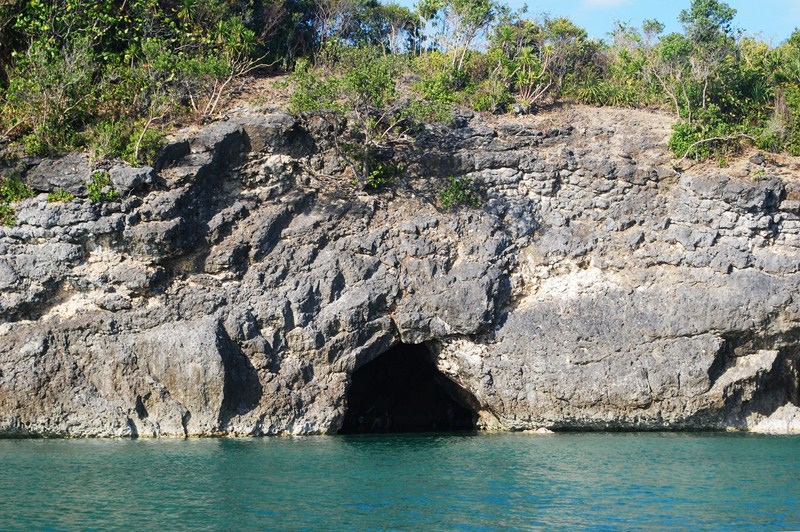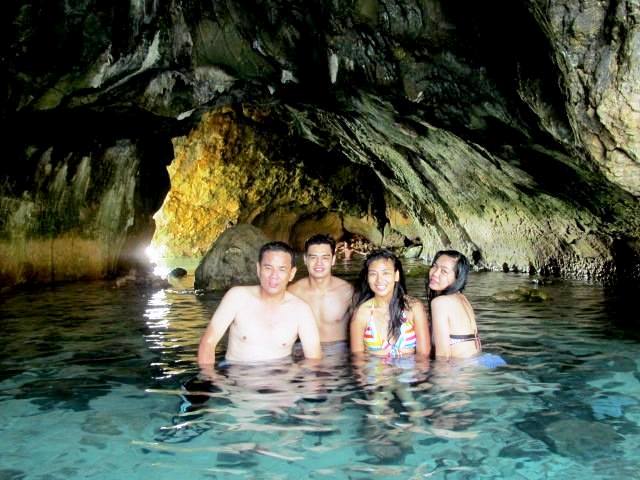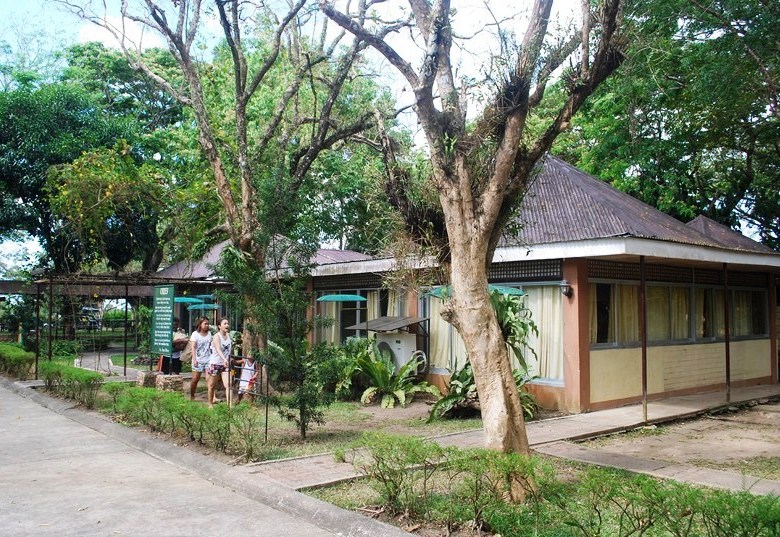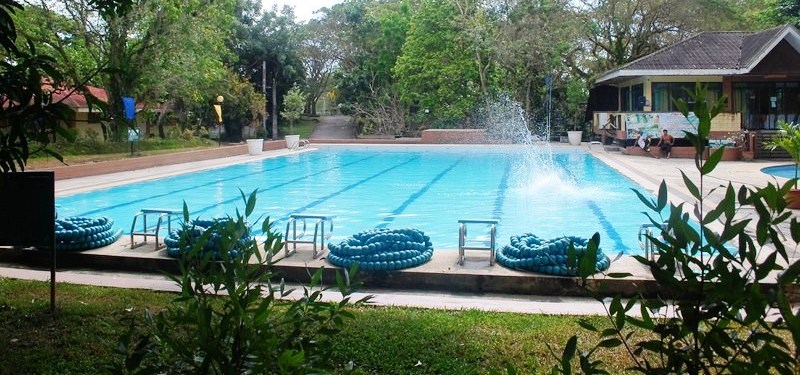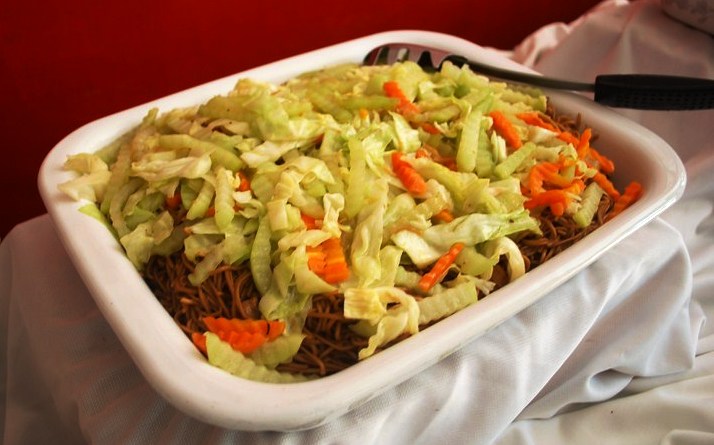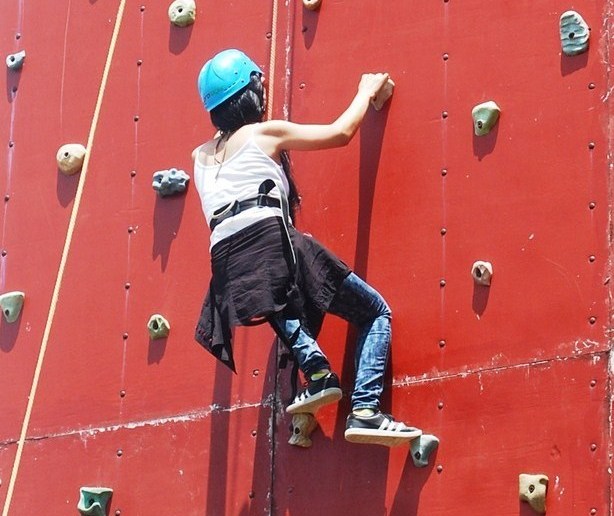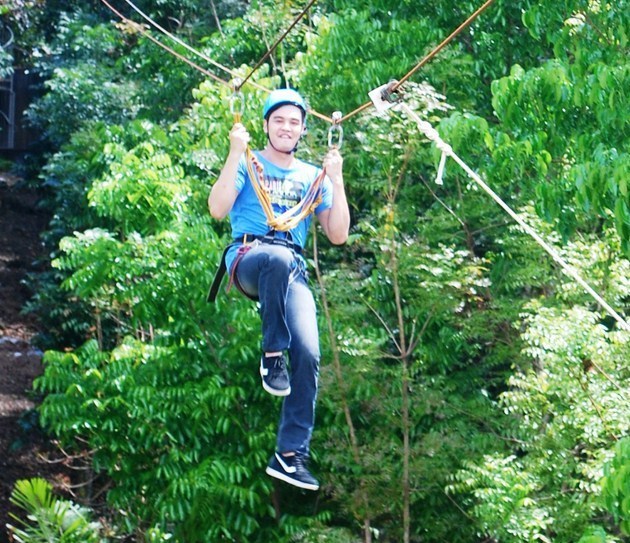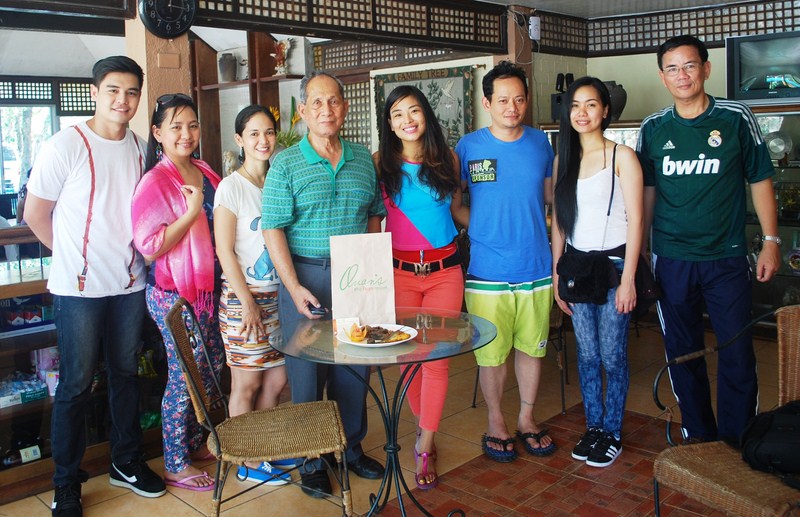After our late lunch and short rest at our resort, we were back on the road again on our airconditioned coach, making a short 13-km./15-min. drive to the next town of Dauis where we made a stopover at Hinagdanan Cave. Upon arrival at the parking lot, we first noticed a number of hawker stalls selling T-shirts, trinkets and other souvenirs, at the end of which is the ticket booth where visitors pay a small entrance fee to enter and explore the cave.
Accompanied by a local guide, we entered this cave via an unbelievably small opening with steep concrete stairs (with railings installed), through which only one person at a time can descend or ascend. The cave was quite dark, slippery and wet, not really recommended for elderly or those with disabilities. Its single, 100 m. long cavernous chamber is studded with stalactites, stalagmites and other rock formations typically found in limestone caves.
According to our guide, Hinagdanan Cave was accidentally discovered when the owner of the area discovered the hole (now a skylight) while clearing the decaying branches on his land. The owner then threw a stone into the hole. Hearing a splash, he realized that a pool existed underground. He then built a ladder to get into the cave. Later, they named the cave Hinagdanan, meaning “laddered.”
Our guide was quite funny and witty with his scripted jokes (his delivery though made it funny). He was also proficient and trained enough to use a DSLR camera, knowing all the spots for nice pictures, the correct camera settings when taking pictures inside that dark cave, all the angles and the f/stops to make sure you get them. We accepted his offer to take our pictures, using Joy’s camera. He took some really good shots inside.
If you’ve seen larger caves like I did, then you’ll probably not be impressed with this fairly small cave (maybe a maximum of 30 persons can be inside at the same time) as it wasn’t really grand or magnificent in terms of size. However, it is exciting and interesting enough for those who are not really into caving but would still want to experience going inside a cave.
Inside is an picturesque, underground spring-fed swimming pool, with a depth of 15 ft. in the middle, illuminated by two natural skylights. Since it has an ocean exit, when it’s high tide, water seeps into the pool and raises its water level. The owner also placed lights inside the cave so visitors don’t end up fumbling around. The cave and the water are cool and there was no strange smell inside the cave as there are no bats, just swallows.
I have visited this cave some 11 years ago and the cave still looked the same, minus the guides and souvenir shops that have mushroomed in the vicinity. Just like a number of our Philippine geologic treasures, some of its rock formations have, over the years, been vandalized or marked up with graffiti.
Hinagdanan Caves: Brgy. Bingag, Dauis, Bohol. Admission: PhP30.
How to Get There: Hinagdanan Cave is located 10 kms. from Tagbilaran City and 2.5 kms. from Dauis town proper, near Pangalo Island Nature Resort.
